The How, What, And Why of Planting Flowers for Cutting
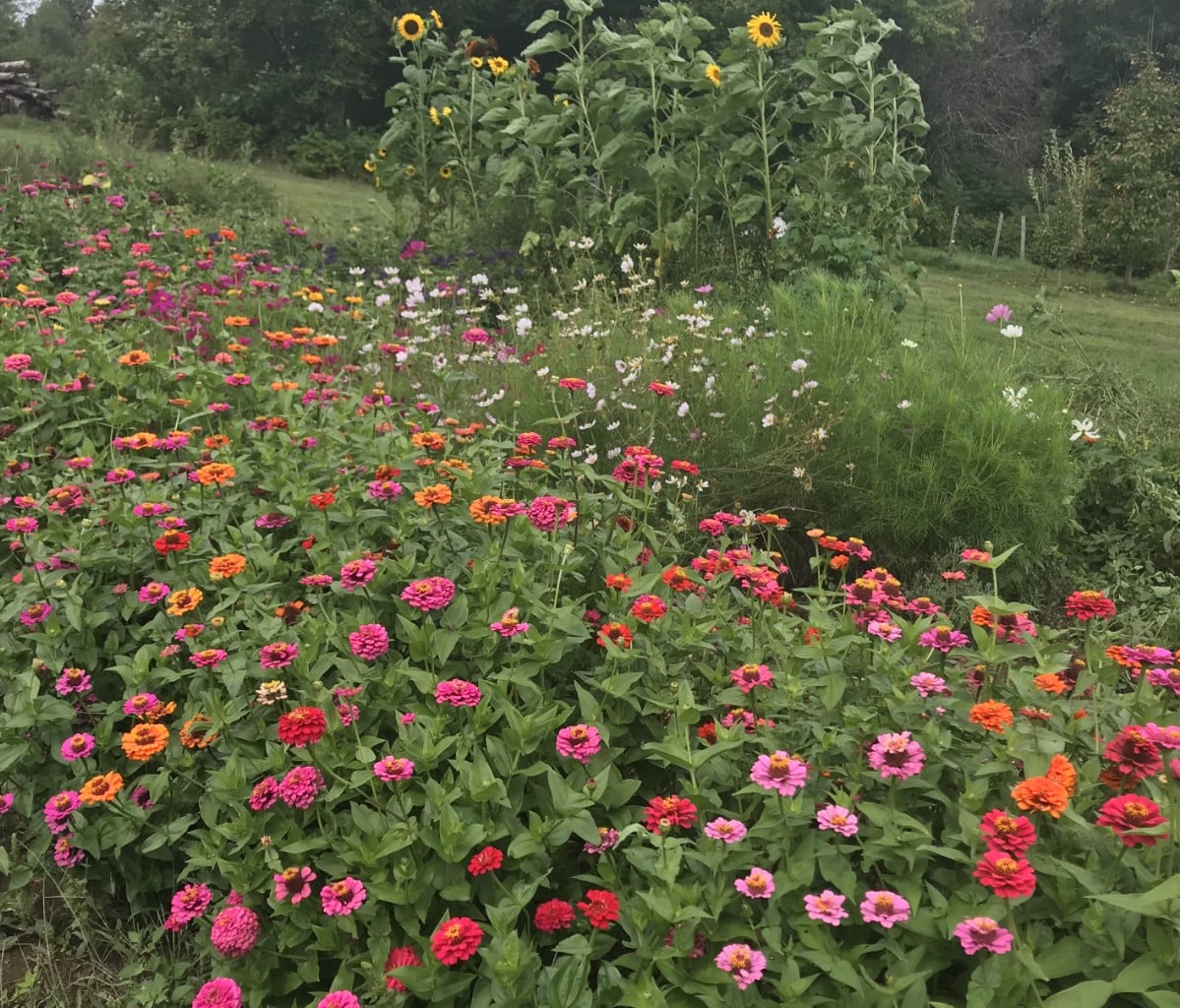
We typically think of flowers as ornaments that belong in flower beds and planters. But a row or two of cutting flowers in the vegetable garden is a very good idea, for a number of reasons. Consider including cut flowers in your vegetable or kitchen garden this year.
Jump to:
- The Benefits of Including Cut Flowers in Your Vegetable Garden
- How To Plant Cutting Flowers in A Kitchen Garden
- Plant Starts or Direct Sow?
- Best Flowers to Plant in Your Cut Flower Rows
- Easy-Growing Greens And Fillers
- Herbal Additions To Compliment Cut Flowers
- Thinking Ahead To Next Year’s Cut Flower Rows
The Benefits of Including Cut Flowers in Your Vegetable Garden
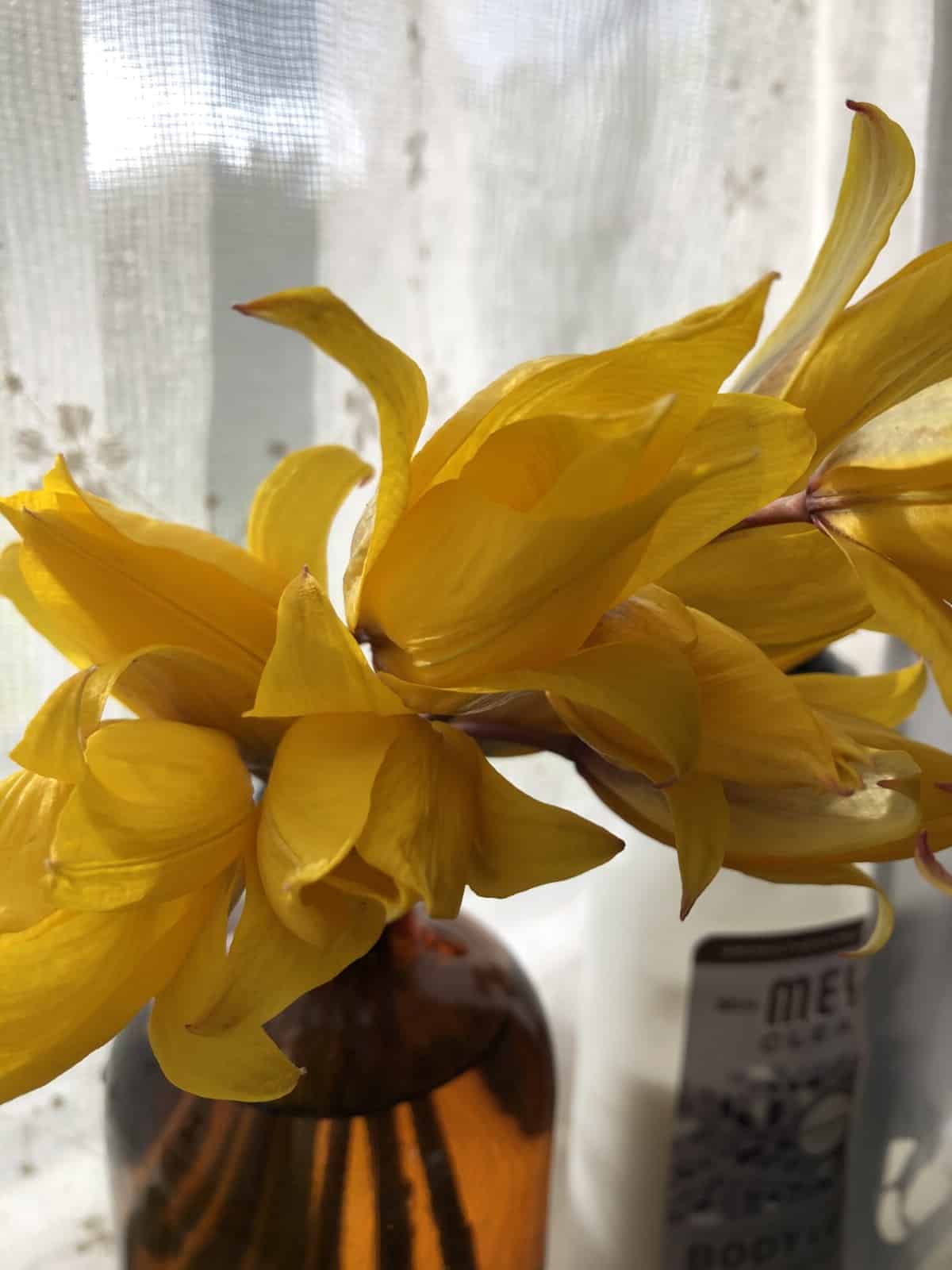
One benefit to including cutting flowers in your “regular” or vegetable garden is obvious: Cut flowers are the beauty you can harvest. By including just a row or two of cut flowers in your kitchen garden, you can have fresh, beautiful blooms for your home all season long. Inside or out, you’ll love having a ready supply of pretty, fragrant flowers to decorate your home—inside and out. Yes, cut flower arrangements are wonderful to have on a porch or patio, too!
The benefits of cutting flowers don’t stop there. Here are some other reasons to grow cut flowers alongside your vegetables:
- Attract Pollinators -- Cutting flowers attract pollinators and beneficial insects. In fact, planned, staggered, flower varieties can often help provide early and late food for honey bees, hummingbirds, and other beneficial pollinators at times of the year when food might be scarce.
- Increase Yields -- Attracting pollinators can increase your garden’s productivity by increasing pollination rates among your food plants. This means higher food yields.
- Trap Bad Bugs -- Many flowers make good “trap” plants for problem garden pests. For example, Japanese beetles are often attracted to zinnias, drawing them away from fruit and vegetable plants that you rely on as food sources. You can then focus on targeting and treating the trap plants and reduce the beetle population in your garden. Japanese beetles are fairly easy to pick, shake, or remove from zinnias without chemical pesticides.
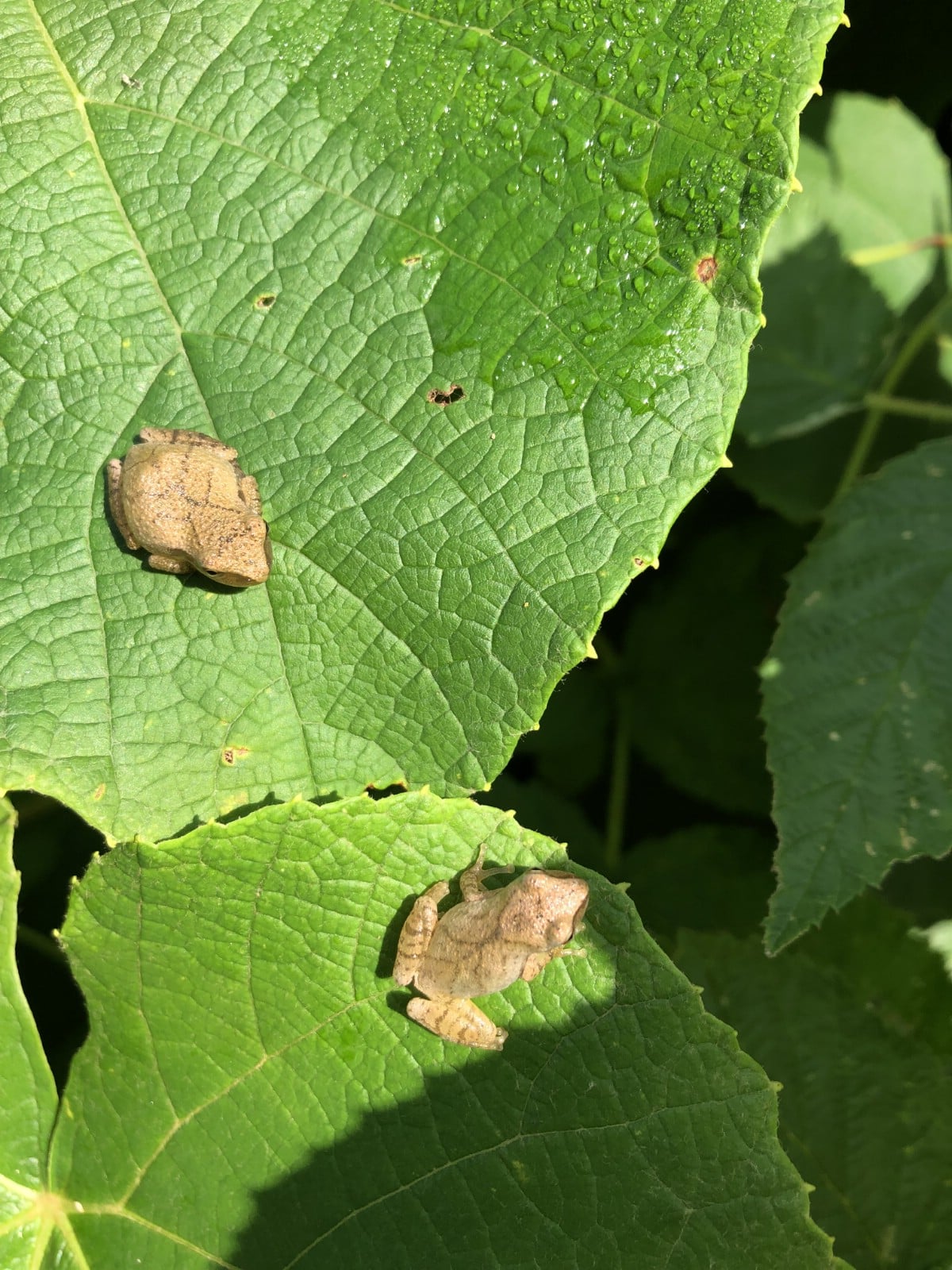
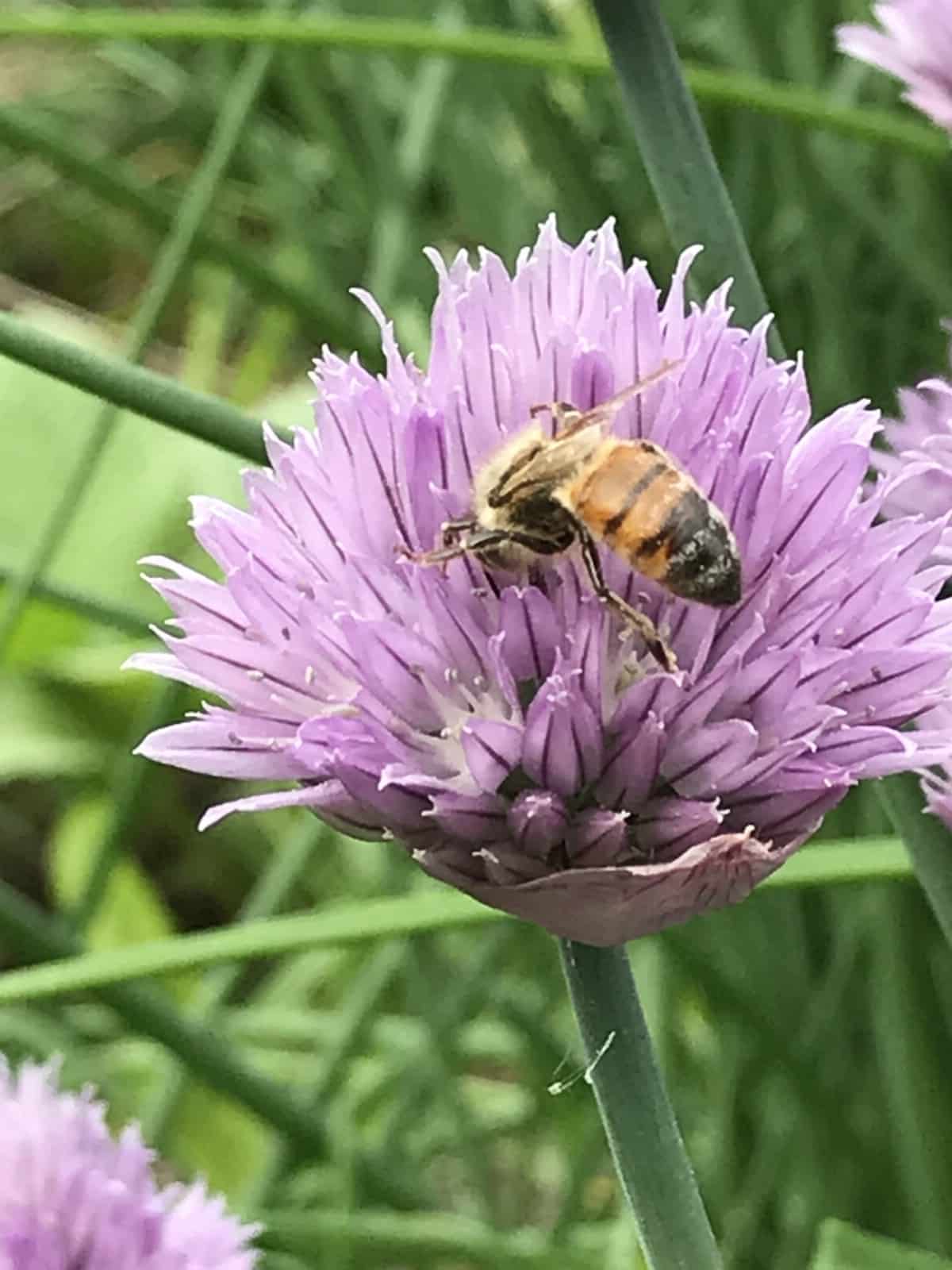

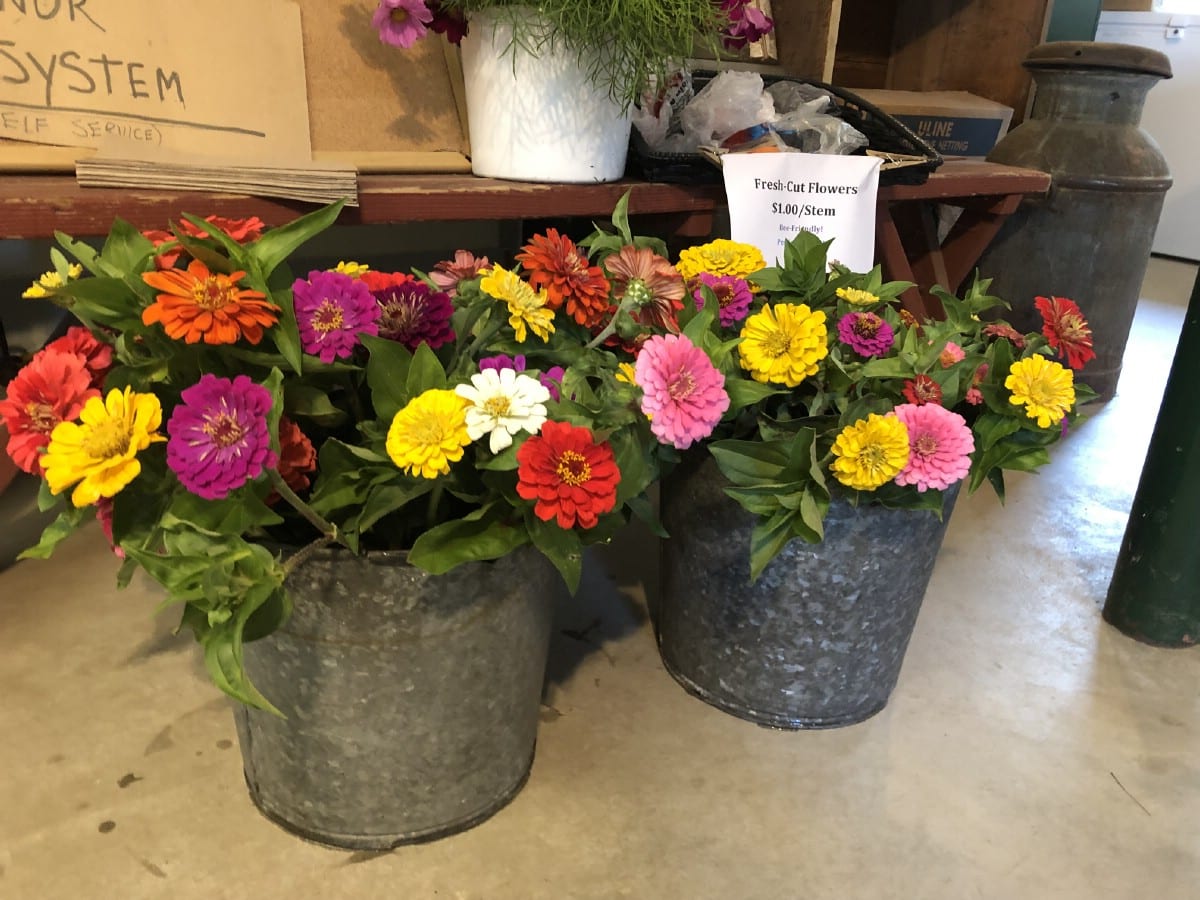
How To Plant Cutting Flowers in A Kitchen Garden
There’s no great mystery to planting cut flowers in your food garden. At the heart of it, planting flowers is much like planting vegetables—follow the seed or plant’s instructions for planting depth, spacing, growth, and care. Here are a few additional tips and basic instructions to get you started.
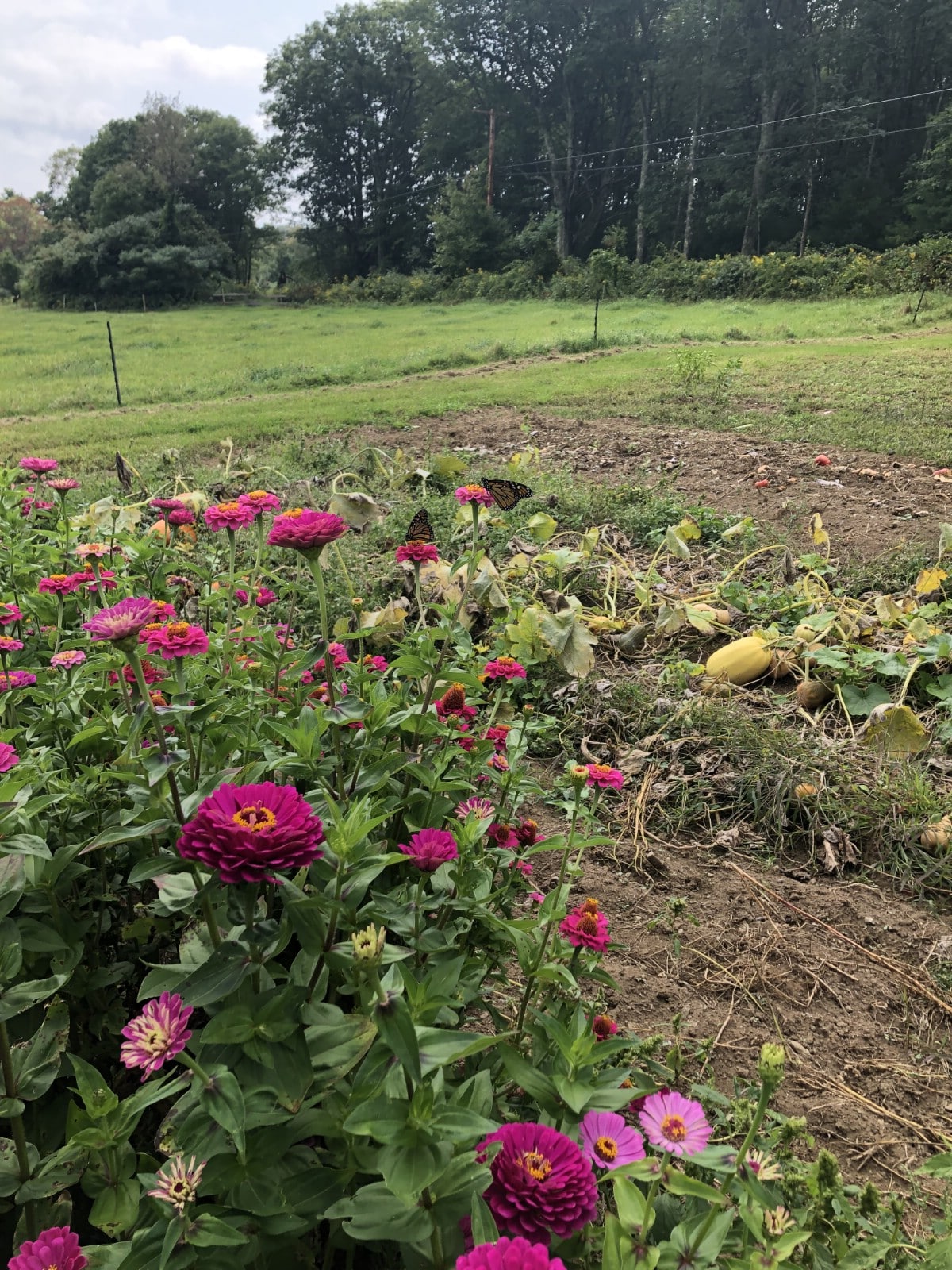
Row by Row—Arrange According to Your Preferred Garden Layout
For ease of cutting, maintenance, and garden planning, it’s best to plant your cut flowers in rows, just as you would any other crop in your garden. That said, if square-foot gardening, raised bed, or another design is your method of choice, treat your flowers just as you do other plants of similar size and structure. Most cut flowers will be similar to peppers in size so for a rough spacing estimate, you could start with the spacing you use for peppers or a similarly-sized plant.
Spacing Annuals and Cut Flowers
Flowers can often be crowded a little more than vegetables. They can also be planted in doubled or even tripled rows so you don’t have to waste aisle space. A good rule of thumb is to space plants 9 to 12 inches apart. Smaller plants can be closer together, while large, bushing flowers may enjoy a bit more space.
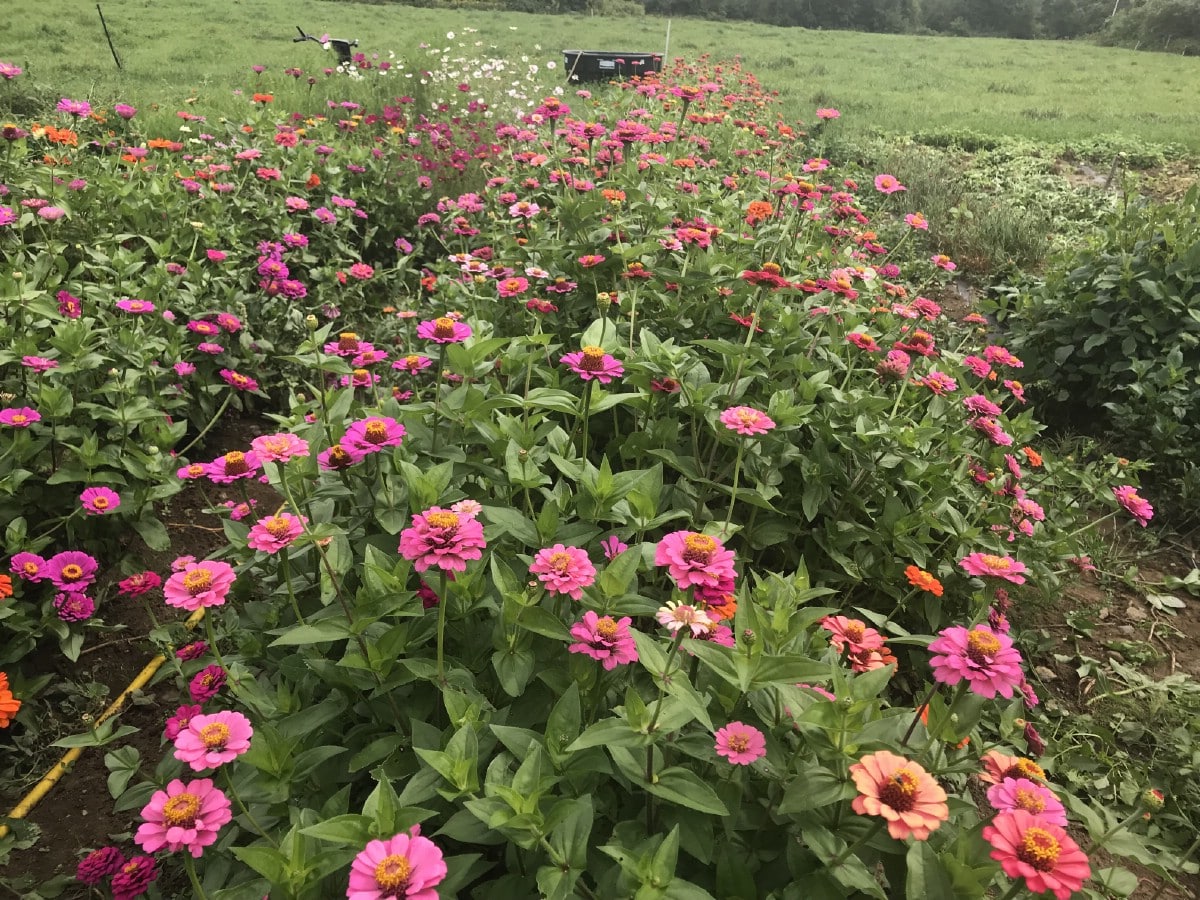
If you are planting perennial flower varieties, and if you plan to leave them in place in your garden from year to year, you’ll want to plan accordingly. This usually means placing them where they won’t be in the way of other crops in subsequent years and/or where they won’t pose a problem for any light machinery that you may be using in your garden (for example, if you have or hire a tow-behind rototiller or other tractor-mounted implements used in early, late, or off-season maintenance).
On Matters of Mulching and Weed Control
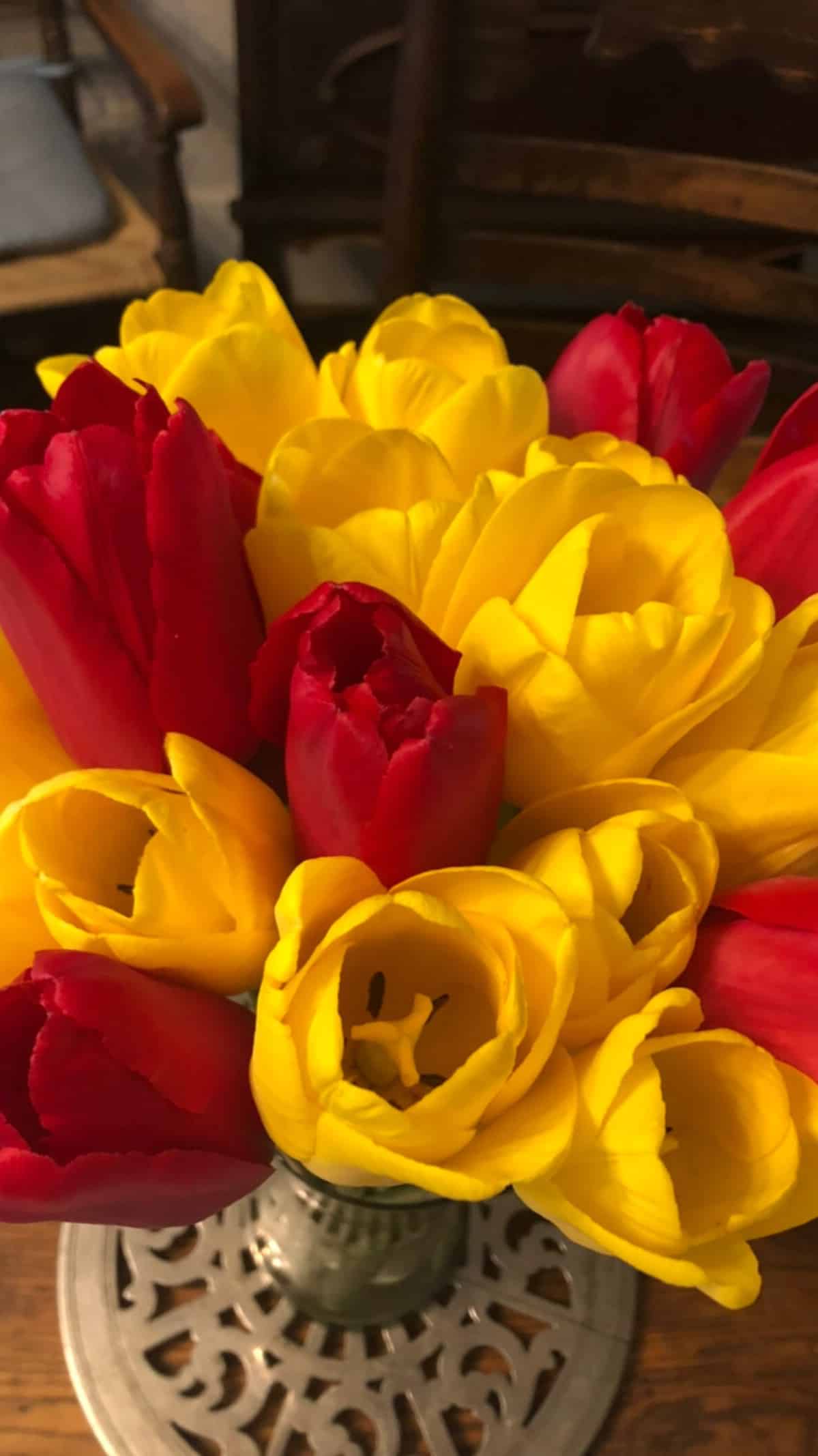
Mulching is optional for cut flowers, but using some form of mulch or weed blocker will make your life easier. Your usual garden mulching or weeding plan will work just as well for your cut flower rows.
Some good options for weed control include laying down a row of landscape fabric, craft or weed-block paper, newspaper, cardboard, or a heavy layer of mulching material. Lay the blocker first, then simply cut or burn a hole through for planting. A hole three or four inches in diameter will suffice. For heavier plastic fabrics, some growers use a torch (but of course care and safety must be taken!).
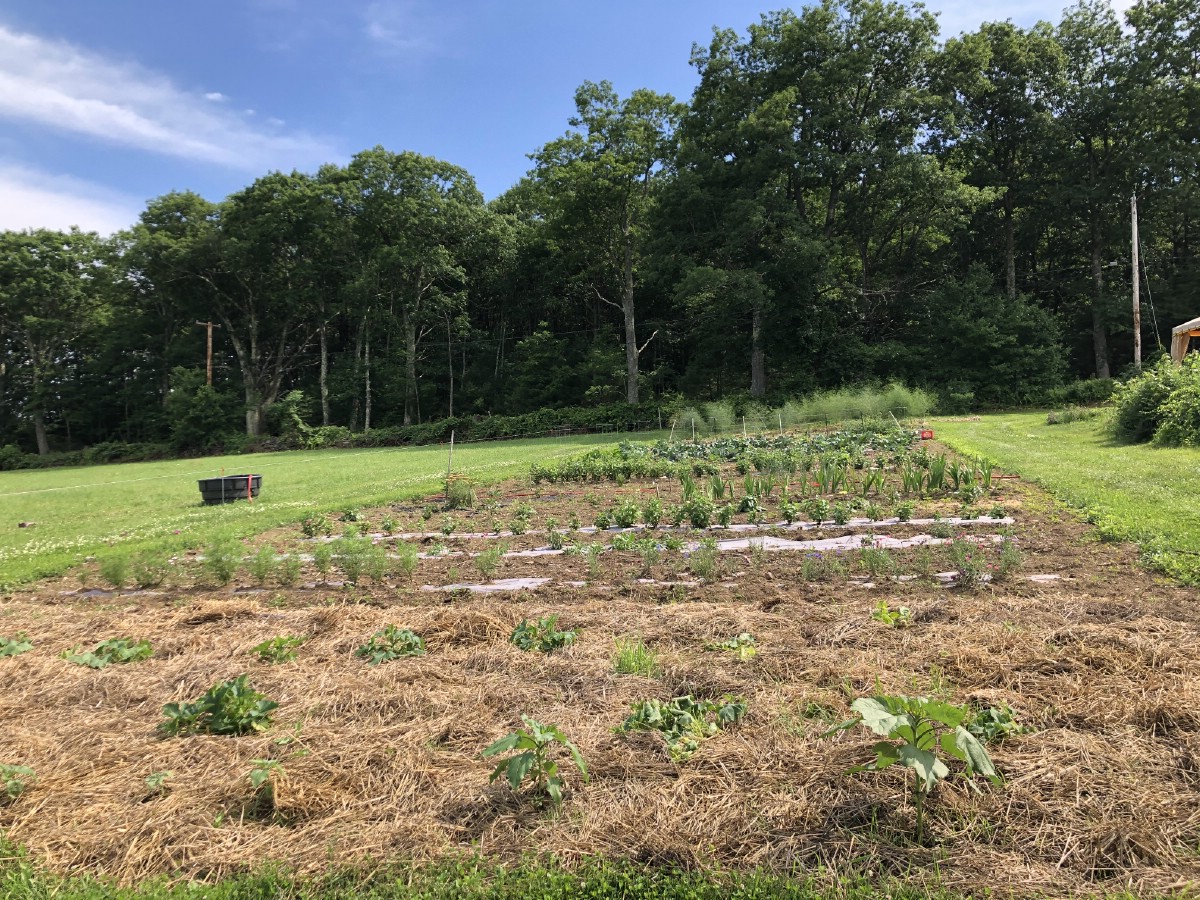
While not absolutely necessary, mulching or using a weed blocker is helpful to keep weed pressure down. Mulching will also to help you identify what is flower (plant) and what is an unwanted weed. We tend to be less familiar with flower plants by sight than we do vegetable plants.
Many weeds look quite similar to flower plants. Using something for weed control can help you early on so that you do not accidentally weed out your flower plants. This is especially true if you are choosing to direct-sow seeds rather than start your flowers from transplants.
Plant Starts or Direct Sow?
Whether you plant from a started transplant or direct sow is up to you and up to the flower and your zone. It also depends on how quickly you’d like to have cut-worthy blooms. Many flowers can be direct-sown, even in colder growing zones, but most cannot be planted until after the danger of frost has passed. From the time of sowing, many plants won’t flower for nearly two months. So starting indoors from seed and transplanting is often the best way to get earlier blooms and enjoy your cut flowers longer.
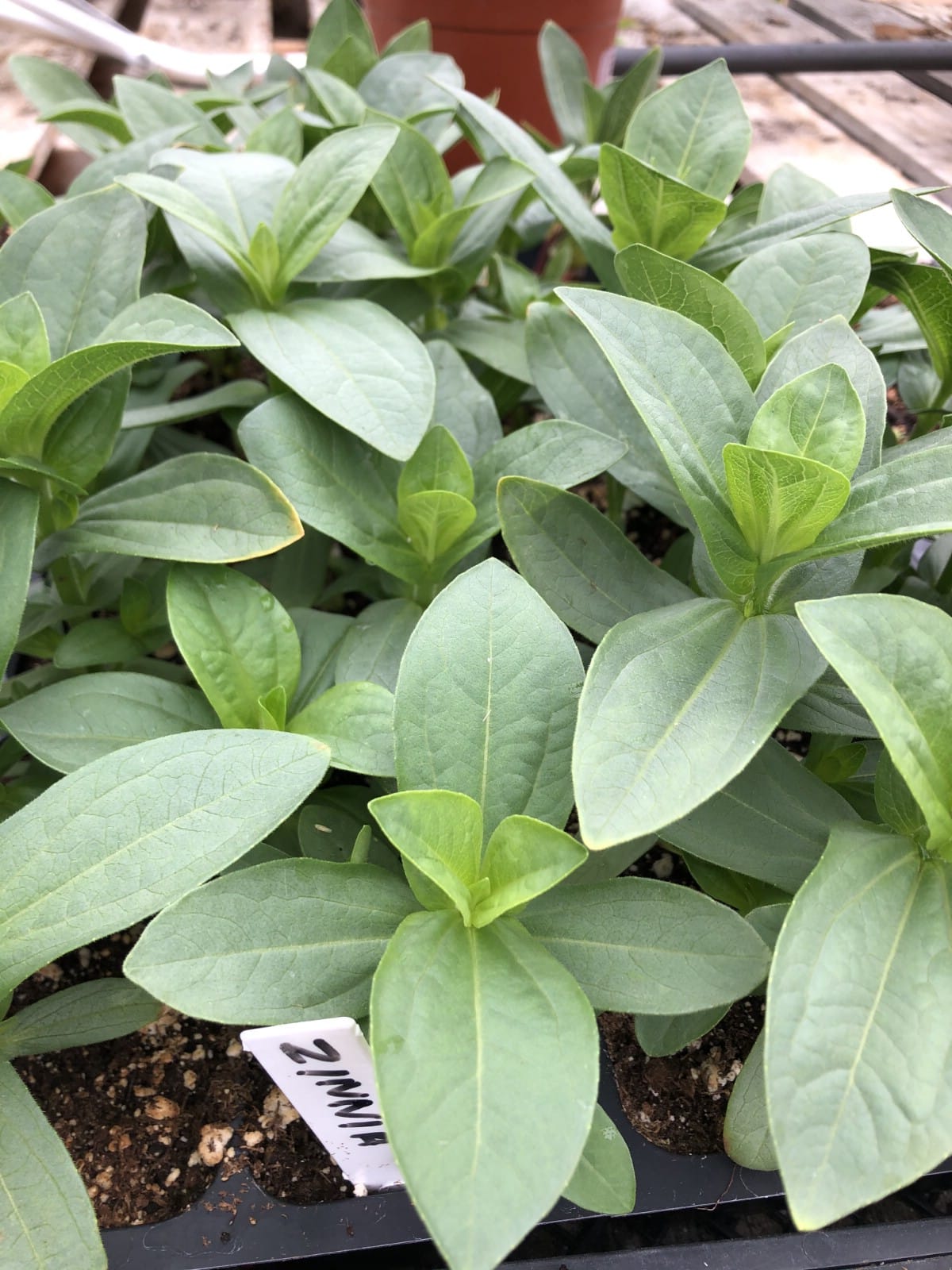
One other advantage to starting from transplants is that the starts are easy to identify in the garden, and so they are less likely to be mistaken as weeds and pulled.
There are, however, some flowers that do not transplant well. Flowers like sunflowers, for example, are better off being direct-sown. They tend to go into shock and/or halt growing when transplanted and the time lost usually ends up being little to no gain at all. You’ll do just as well planting sunflowers from seed directly into your garden as you will starting them indoors—often better, in fact.
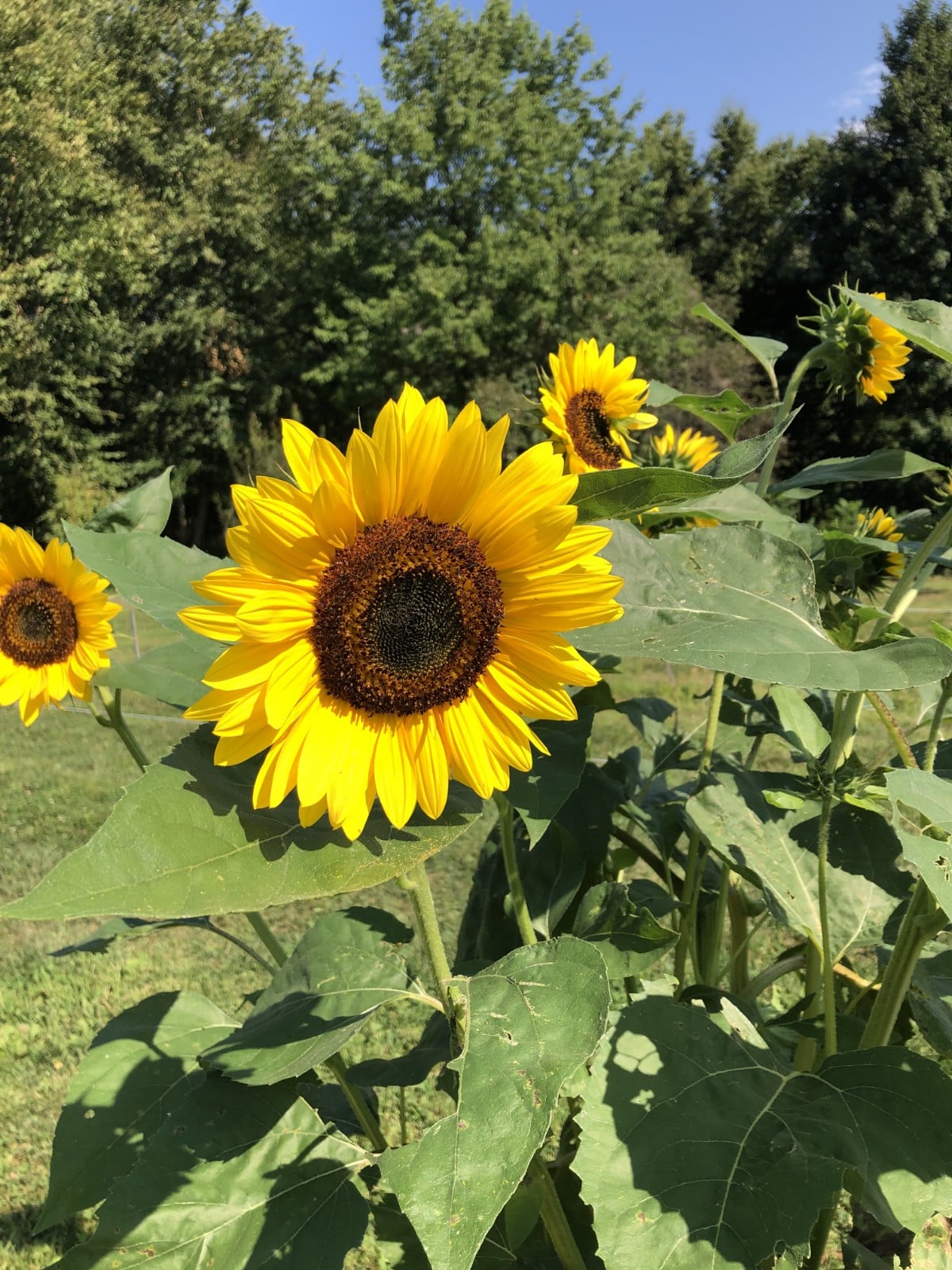
Best Flowers to Plant in Your Cut Flower Rows
Many types of flowers make excellent cut flowers. Some are easier to grow than others, though, and some are more suited to use as cut flowers. The following list includes easy-growing, easy-care, productive flowers that fit well into a vegetable garden cut flower plan.
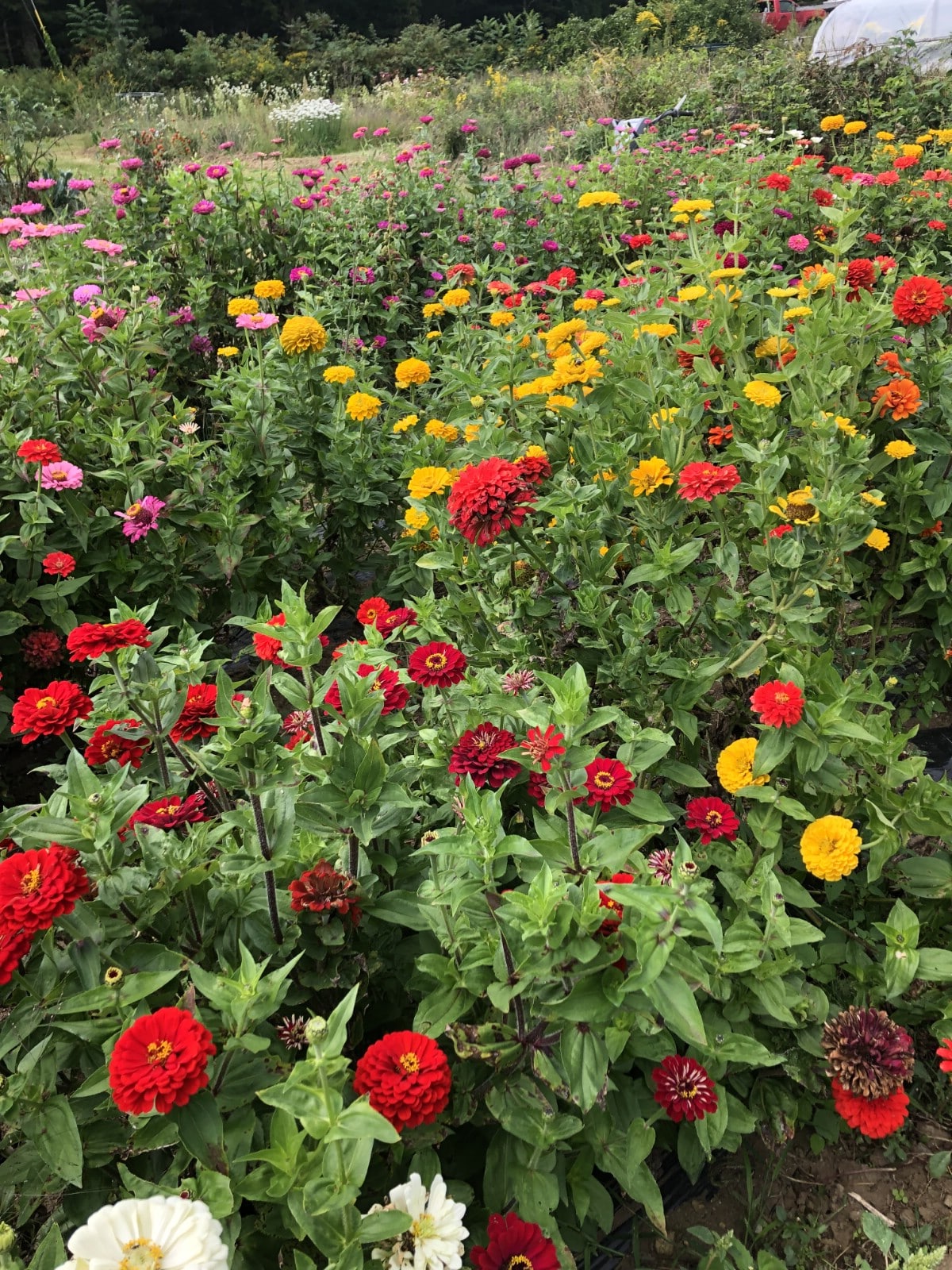
These selections have also been chosen with timing in mind so that you can have fresh cut flowers almost continuously from early spring through fall, right up until frost (with some possibly going even a bit longer). They are listed more or less in order of blooming to give you some idea of the progression of cut flowers available throughout the season. Variation in timing can occur depending on location and variety, but this is a good general guide. Many flowers are listed as annuals for some zones. Common annuals have an “A” next to them; flowers listed with a “P” are perennials for most growers, which means they should be placed in a permanent garden home if used in the cut flower/vegetable garden.
Daffodils (P)
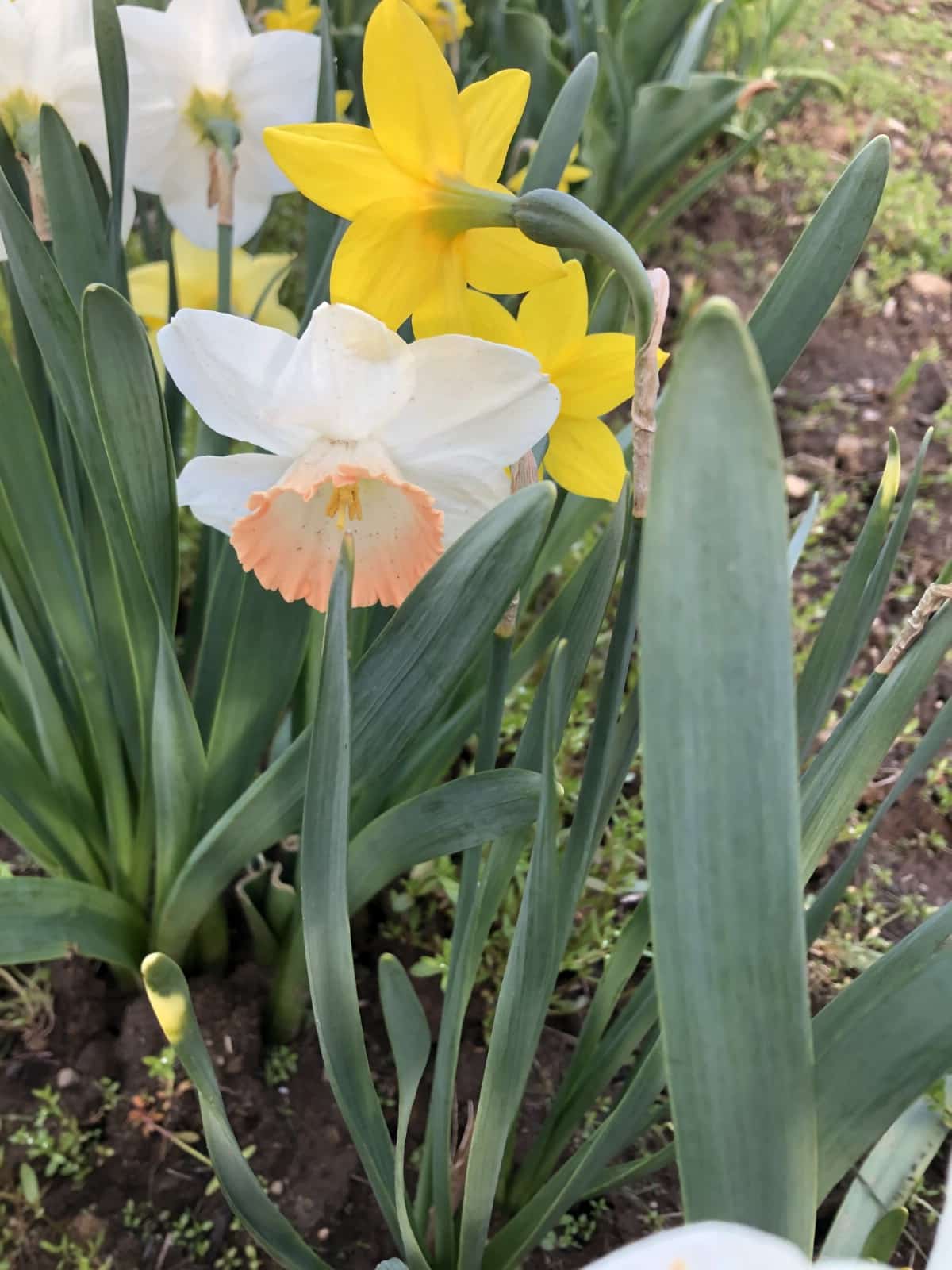
Daffodils are a fall-planted perennial bulb that we often see grown as a bedding plant. They are worth dedicating some long-term cut flower space to because they will give you the earliest possible cutting flowers and they will do so year after year—and at just the time of year when you need a little color brought back into your life! Daffodils are hardy and do not need to be dug up at the end of the season. There are several interesting varieties and colors of daffodils beyond the typical all-yellow, including white, dual-color, double-blossomed, and mini daffodils.
Tulips (P/A)
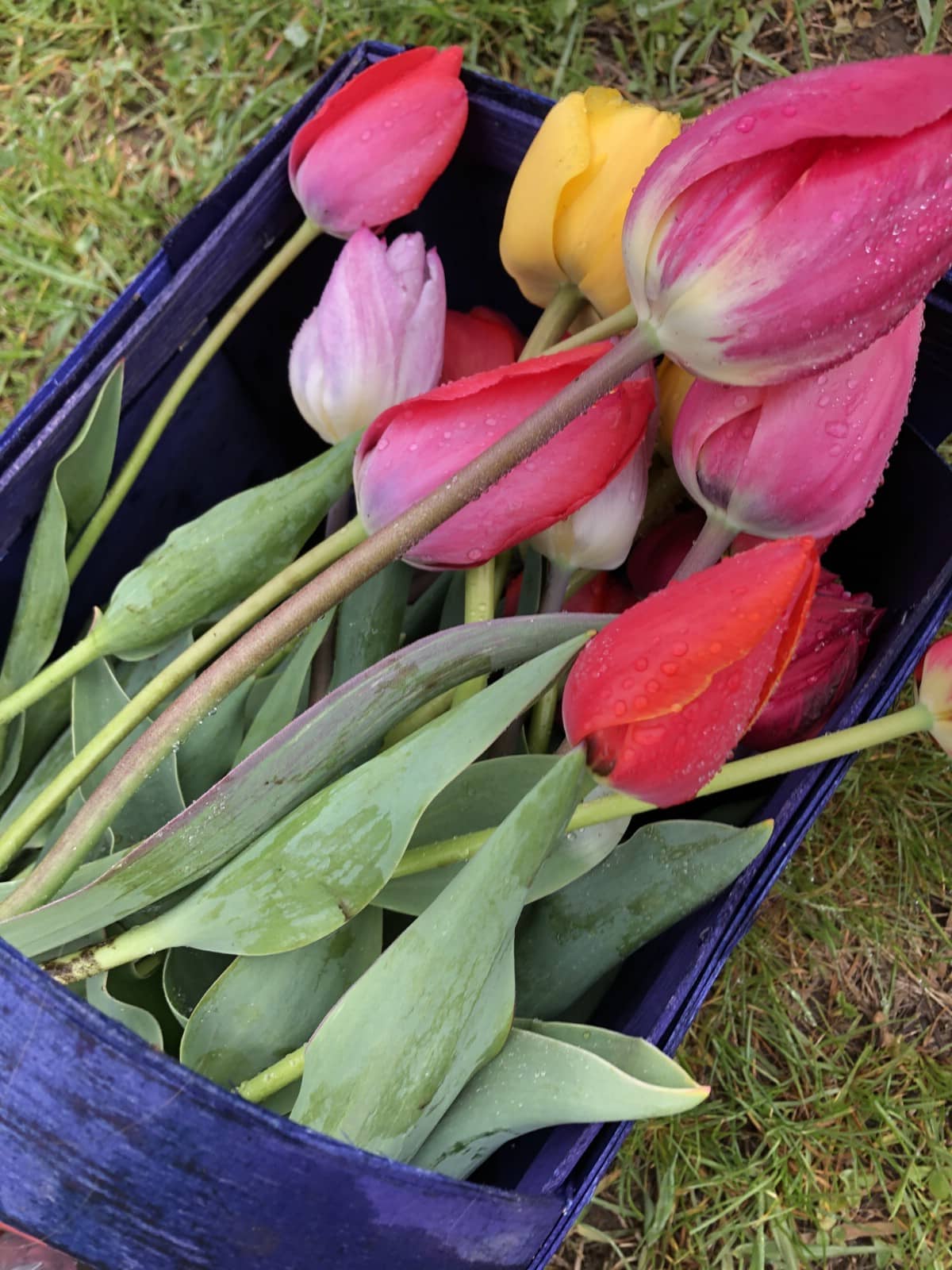
Tulips are second behind daffodils and often overlapping in their season. The color range is much wider than that of daffodils and there are also some stunning shape varieties, including a double or peony-shaped tulip. They are fall-planted bulbs but tulips do not always come back well every season. Plan for them to be perennial, but also think about throwing some fall bulbs in each year to make sure you have spring blossoms coming. This is especially the case for the more exotic tulip varieties like the doubled or peony-type. For this reason, some gardeners treat tulips as annual—which is not a bad option for a cut flower garden housed in a vegetable garden.
Peonies (P)

Peonies grow from perennial tubers that are not dug up so they, too, require a dedicated spot. They are also more typical as bedding plants, but there is a great benefit to giving them their space in your cut flower rows. You’ll be rewarded with bigger, better plants and stunning blossoms every late spring. They’ll be more accessible and they’ll benefit from the amendments that get cast around the garden rows. That, and you won’t need to feel guilty about stealing them from your flower beds to bring them inside.
Cosmos (A)
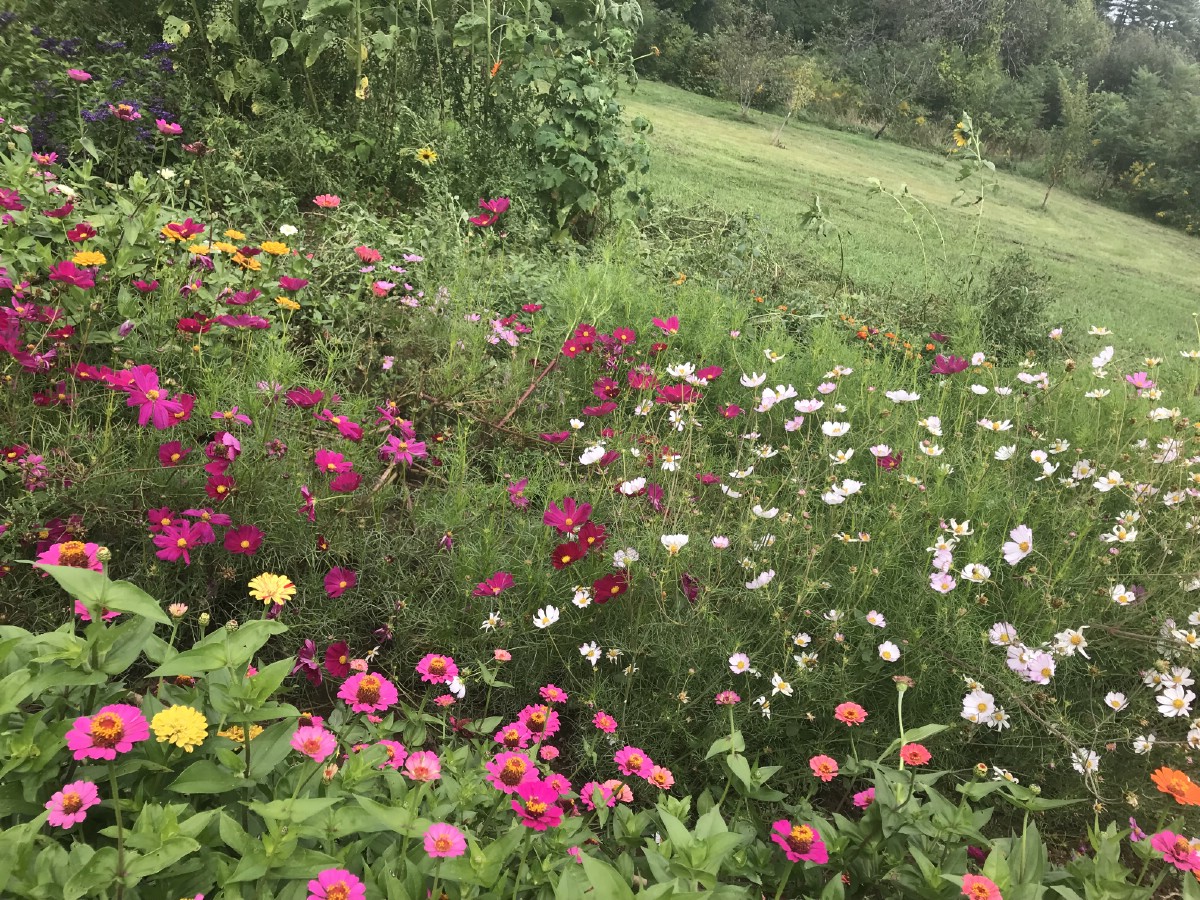
Cosmos start and grow easily and work well with many flowers in arrangements. Their feathery greens also make good fillers. Their colors typically vary from white to pink and dark pink/maroon. Cosmos seeds are easy to save and sometimes they will even reseed themselves.
Zinnias (A)
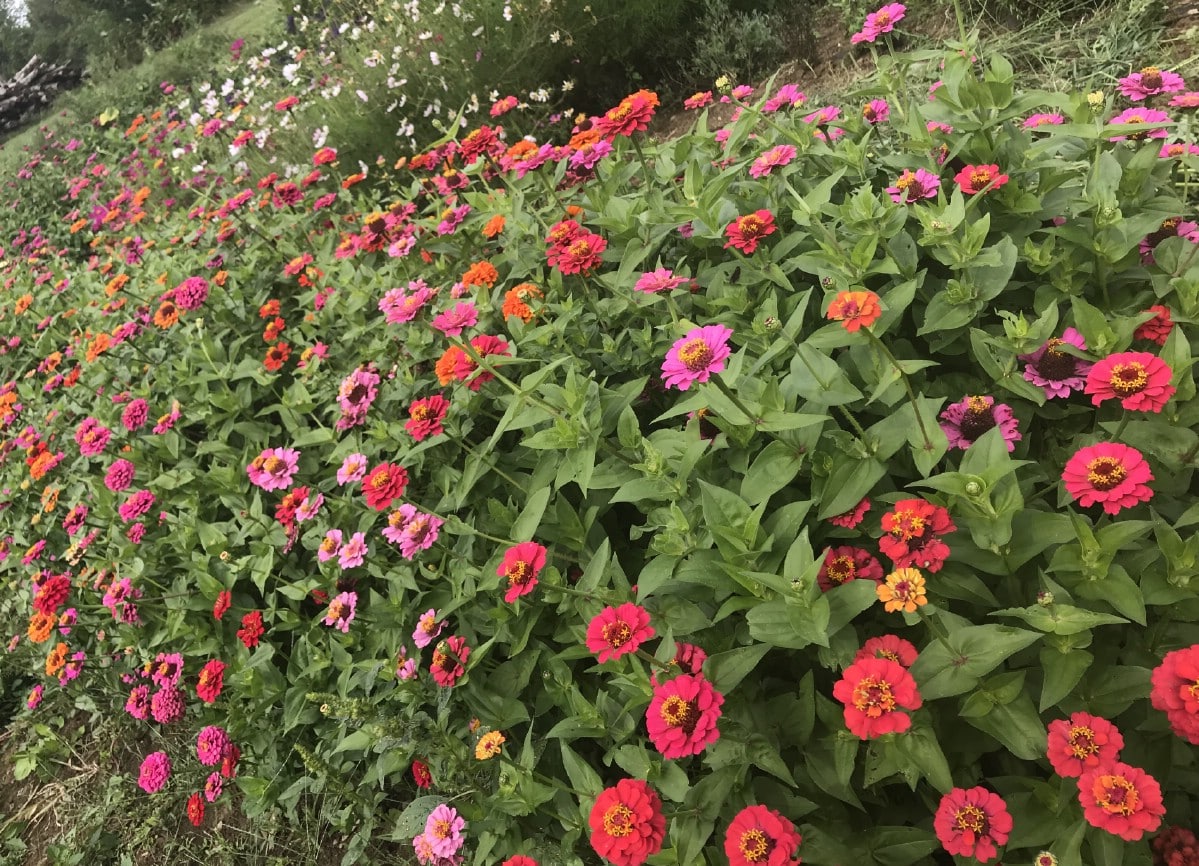
If you only plant one type of flower for cutting in your garden, make it zinnias. They are prolific producers that will continue to produce all season long and respond well to cutting. Zinnia colors run the entire spectrum. There is a wide variety of blossom shapes as well. Zinnias will give you plentiful cut flowers even in limited space. Excellent for beginner growers, zinnias should be the foundation of any cut flower garden.
Yarrow (P)
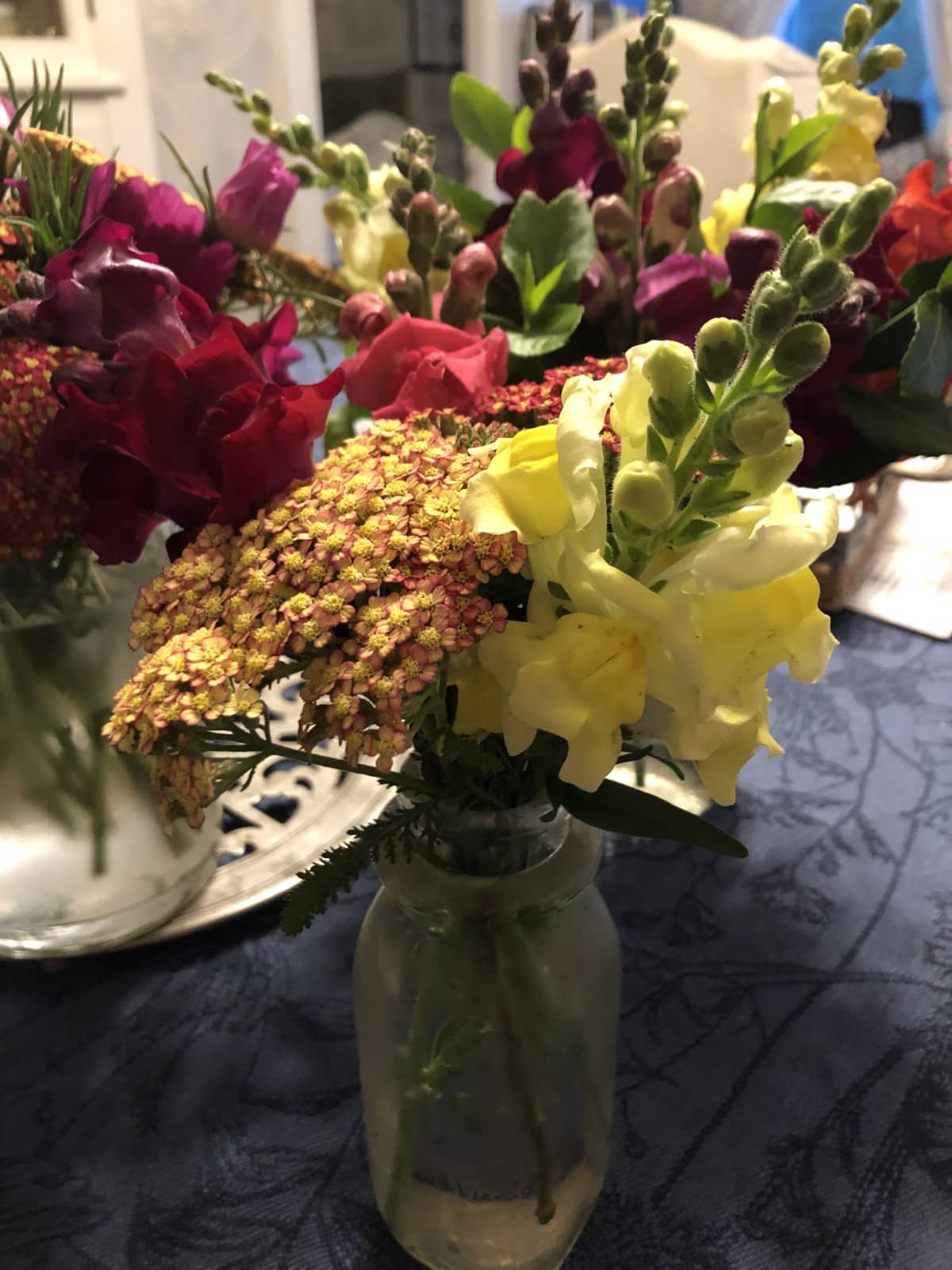
Yarrow is often considered an herb with beneficial properties but is a wonderful cut flower, too. Flowers are tiny and grow in umbrella-like clusters. They are an excellent complimentary and filler flower for arranging. White or yellow may be most common but there are different colors, sometimes on the same plant. It is usually a perennial and just one or two plants will provide plentiful blooms all summer.
Snapdragons (A)
Snap dragons are all also long-season producers. They are unique, colorful, and elegant. These easy-growers are a nice way to add interest and elegance to home cut flower arrangements.
Dahlias (A/P)
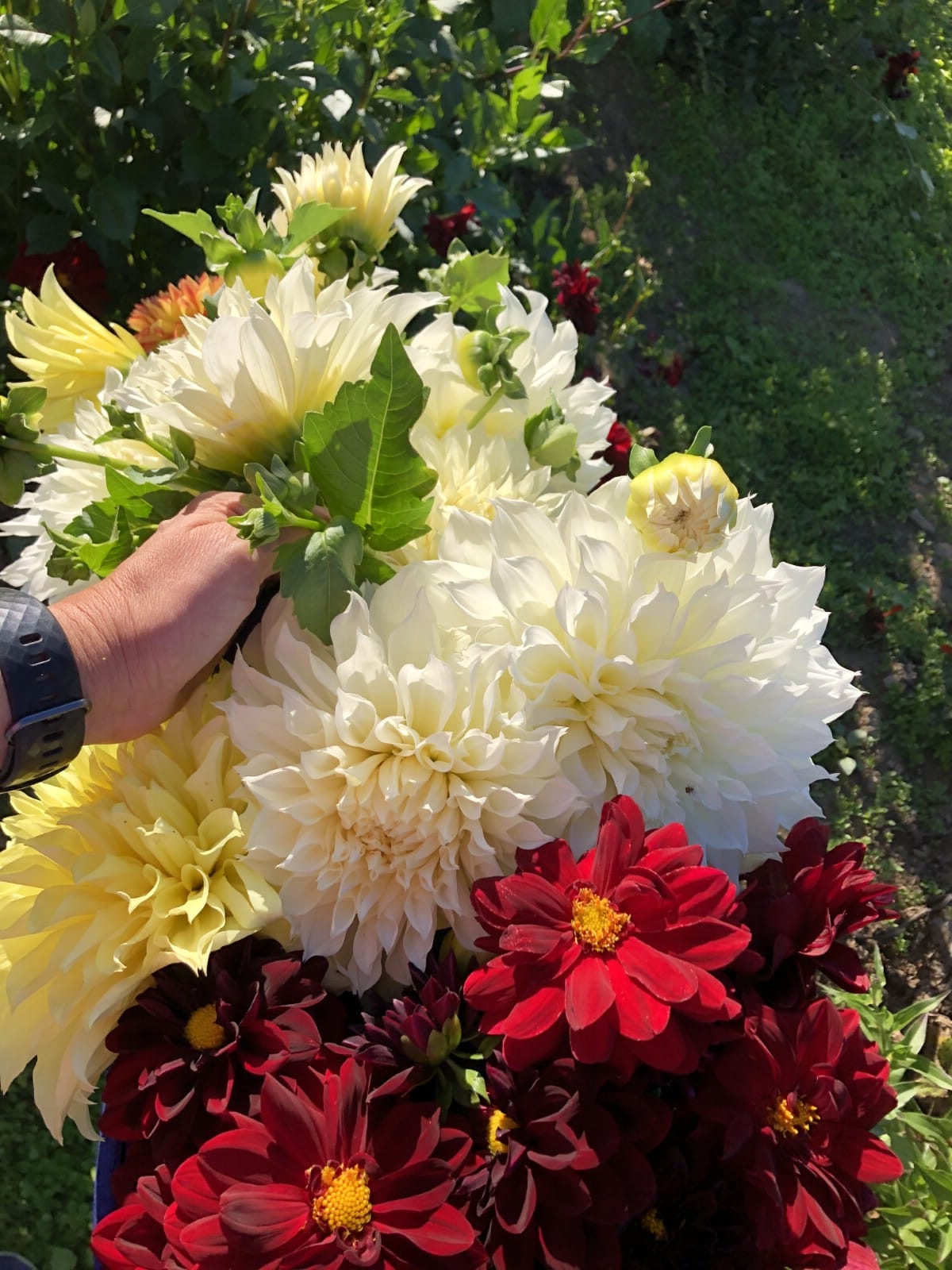
Dahlias grow from tubers and in many zones they will not over-winter, so they are typically dug after they die back after frost and then stored in a cool location like a basement. They work well in a cut-flower row in a food garden because they provide bulb-like perennial quality without tying up a dedicated location (since they are dug and replanted every year). Tubers start out about the size of a carrot, but that single tuber will multiply into a large mass that can be dug, split, and replanted year after year. Dahlias vary from small varieties to huge dinner-plate types and offer a variety of vibrant colors growing in unique formations. They last well in vases and are considered a premium flower.
Gladiolas (A/P)
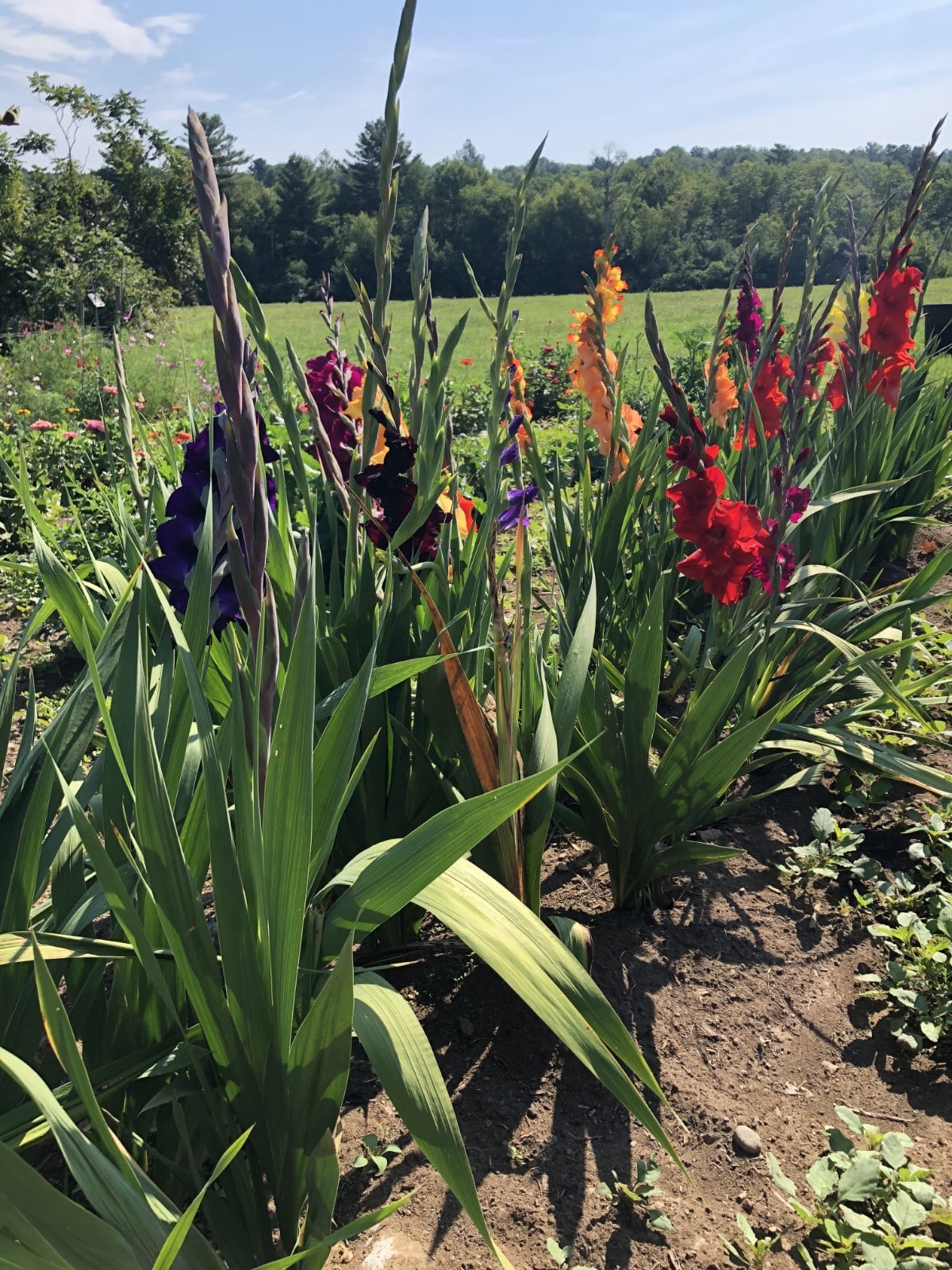
Gladiolas are tall, impressive, classic cut flowers that have been grown in rows in vegetable garden for generations. They do not over-winter in most zones so, similar to dahlias, gladiola bulbs usually need to be dug in the fall and replanted in the spring after the soil warms and frost danger has passed. The bulbs will multiply throughout the growing season and the “reused” bulbs often come back stronger and brighter with each planting. In warm growing zones, gladioli may be treated as perrenials and may not need to be dug and stored.
Daisies (A/P)

Daisies are perennial in many zones, though that is somewhat dependent on the variety you plant. Their bloom time will vary—a little later the first year they are planted, but earlier after that if they are left to grow as perennials. They are a lasting flower with a long bloom period of one to two months and will often survive even after frosts, until hard freezes begin.
Black-eyed Susans
Black-eyed Susans are another classic that can be grown as a perennial in many zones. They also last a long time and usually outlast the first frosts. This is one to count on to extend your cut flowers into the fall months and will be among the last of your cut flowers.
Sunflowers
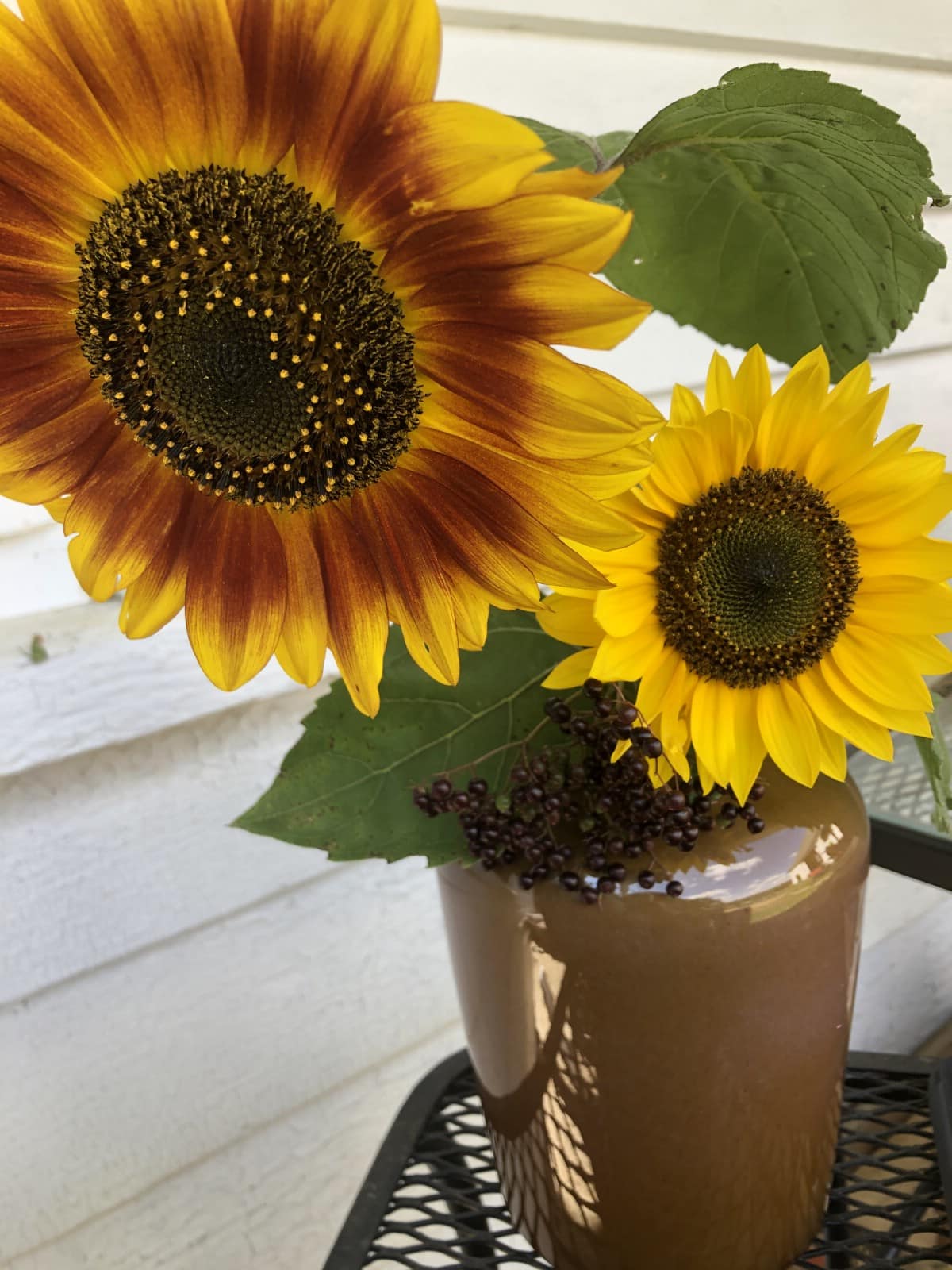
Sunflowers are, of course, a favorite of late summer and early fall. They attract scores of pollinators to them, often because they are one of the later pollen sources, providing an important food source for honey bees and other pollinators in a period of more scarcity. In addition, sunflower seeds are delicious and nutritious for humans as well as birds and wildlife. Just leave them in place as they die back at season’s end to make a natural feeder for the birds. They can be quite hearty through the cooling fall months and make classic cut flower arrangements for the fall. Though not as beneficial to pollinators, there are pollen-less varieties that some cut flower gardeners prefer because they make less messy indoor arrangements.
Easy-Growing Greens And Fillers
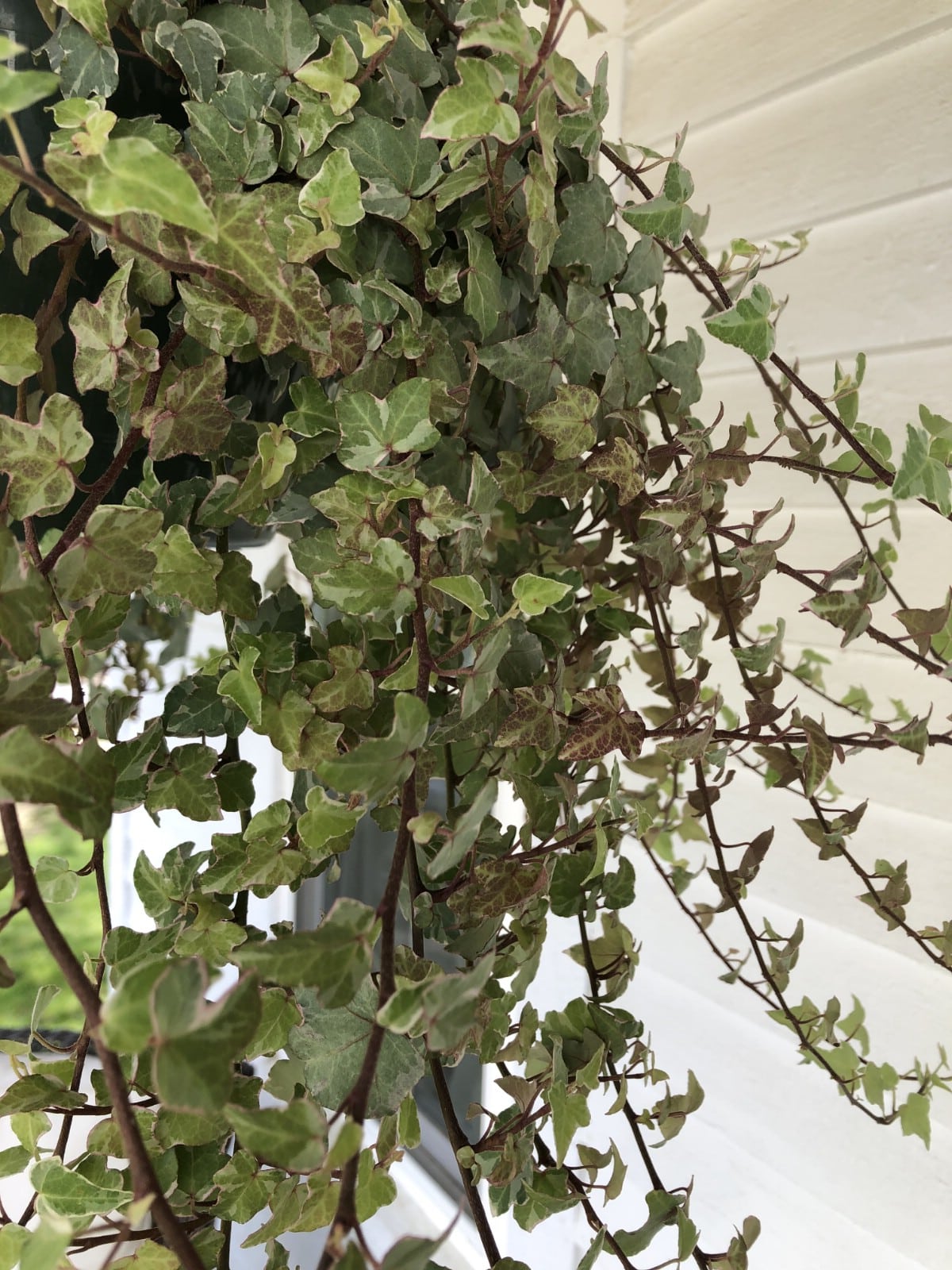
These flowers are quite capable of standing on their own, but for stepped-up bouquets, consider growing something to use as greenery and filler to round out your arrangements. Various types of ivy and other landscape plants like ferns will work well. Vining bedding plants and ground covers like vinca, periwinkle or myrtle and similar stemmy, leafy greens also make good fillers.
Eucalyptus, though a warm-zone plant, will grow as an annual in most areas and can be planted in your cut flower row, making a fragrant, beautiful bouquet filler. It will also make wonderful dried wreaths and is useful in the home as well. To have an annual supply for your cut flower garden, start from seed very early on indoors or dig the plant and bring it inside for the winter.
Herbal Additions To Compliment Cut Flowers
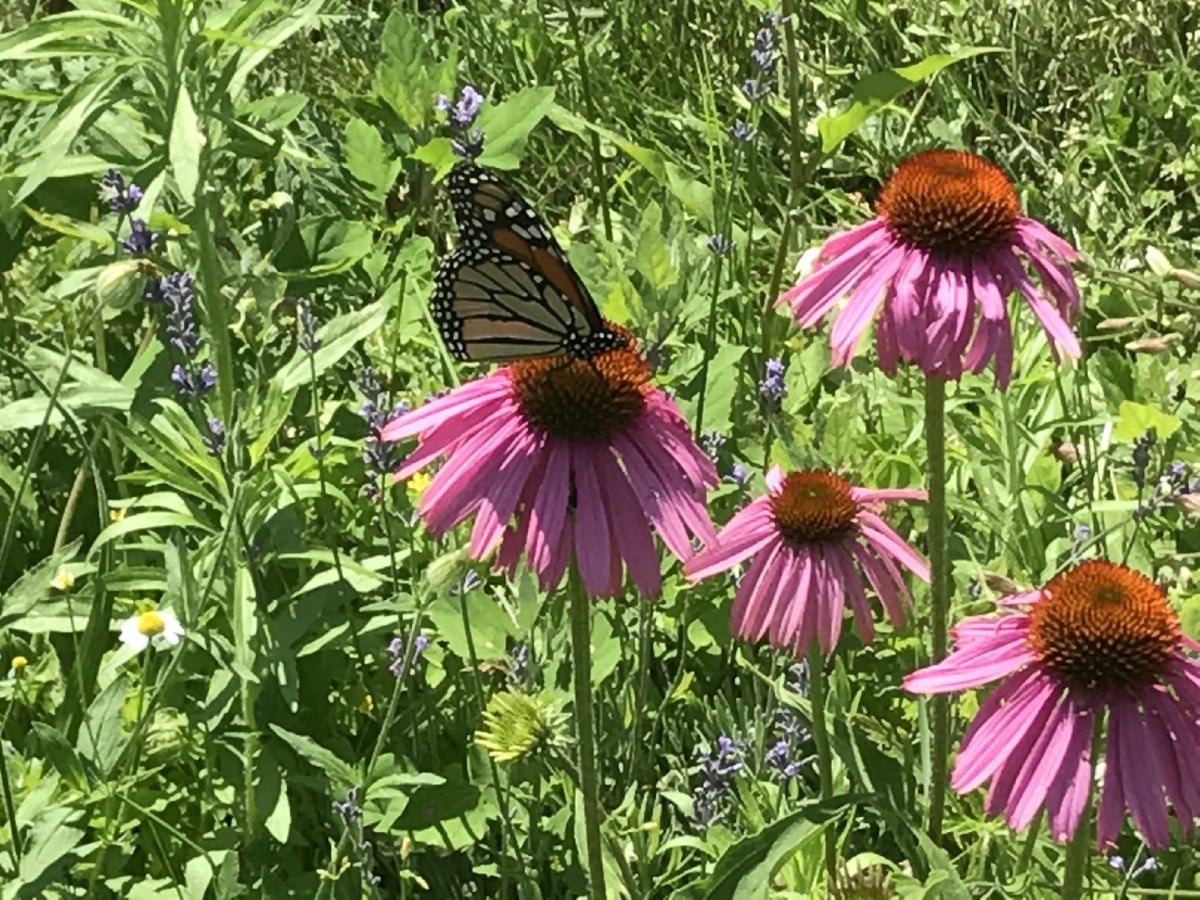
Don’t discount common herbs for use in cut flower arrangements and/or as fragrant fillers. Basil (an annual in most zones) is a good candidate with green, purple, and mixed-color varieties. Mint makes a pleasant and prolific filler, too (though it is a hardy perennial that tends to take over a space so it is best not to plant mint in the rows of your garden—plant it off in a patch of its own). Both the flowers and the greenery of the lavender bush will be welcome and useful additions that will lend a lot to your cut flower arrangements.
Echinacea is another flowering herb with true, full blooms to consider as a cut flower. Chive flowers and alliums are also worth considering, particularly for outdoor patio arrangements because they are natural bug repellants. (Basil, mint, and lavender are naturally repellant, too.)
Thinking Ahead To Next Year’s Cut Flower Rows
As your cut flower season winds down, think ahead to next year’s garden. Many of those plants that you planted this year will have more to give, saving you more money in the coming years, potentially to the point where it won’t cost you anything at all to plant your cut flower rows.
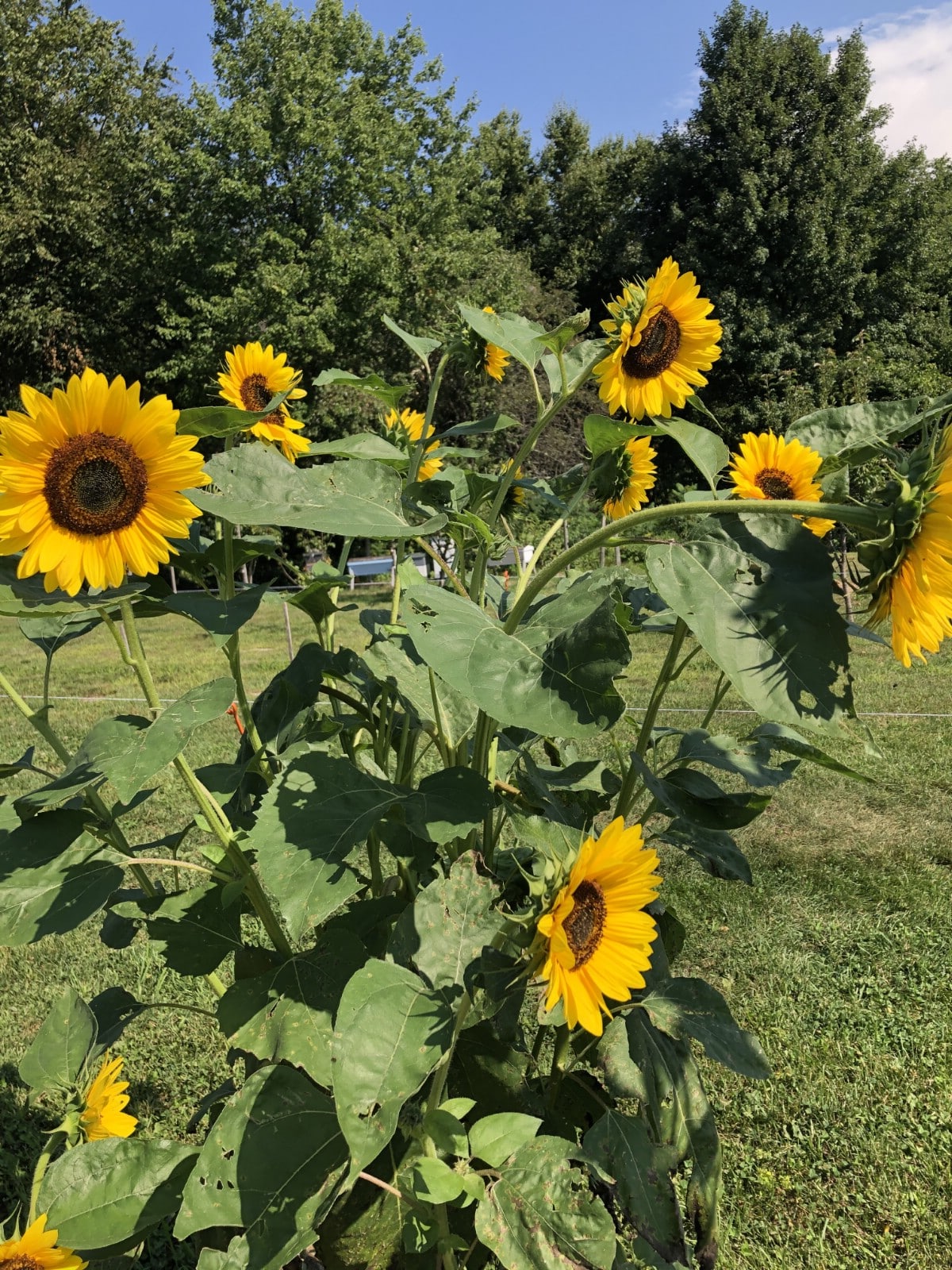
Flower seeds naturally dry easily and so they are easy to save for next year’s garden. Let the heads dry down, clip, and save.
Perennial plantings will come back year after year with little additional care.
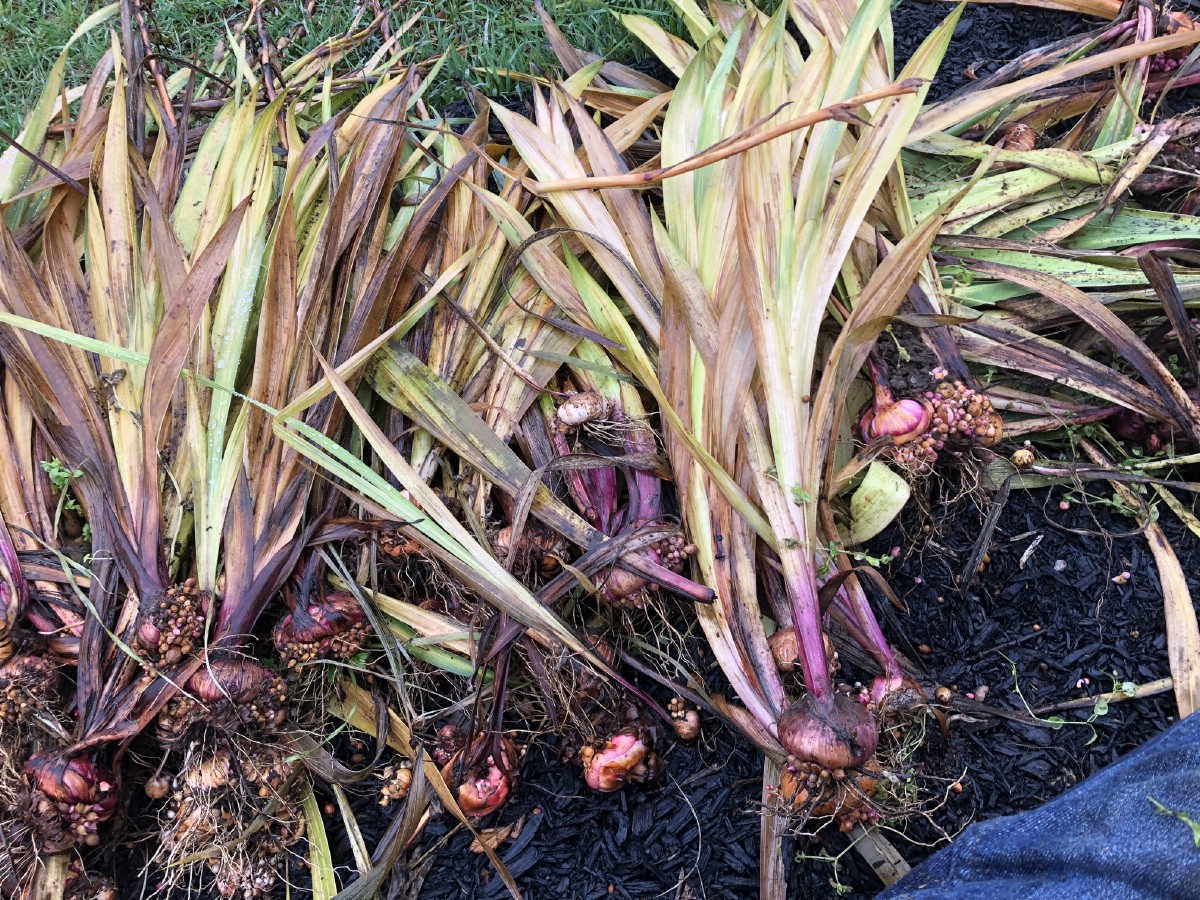
Tender bulbs like gladiolas and dahlia tubers are easy to dig when planted in rows and easy to cure and store for the next season. As they multiply, you’ll have more to enjoy or sell or give away.
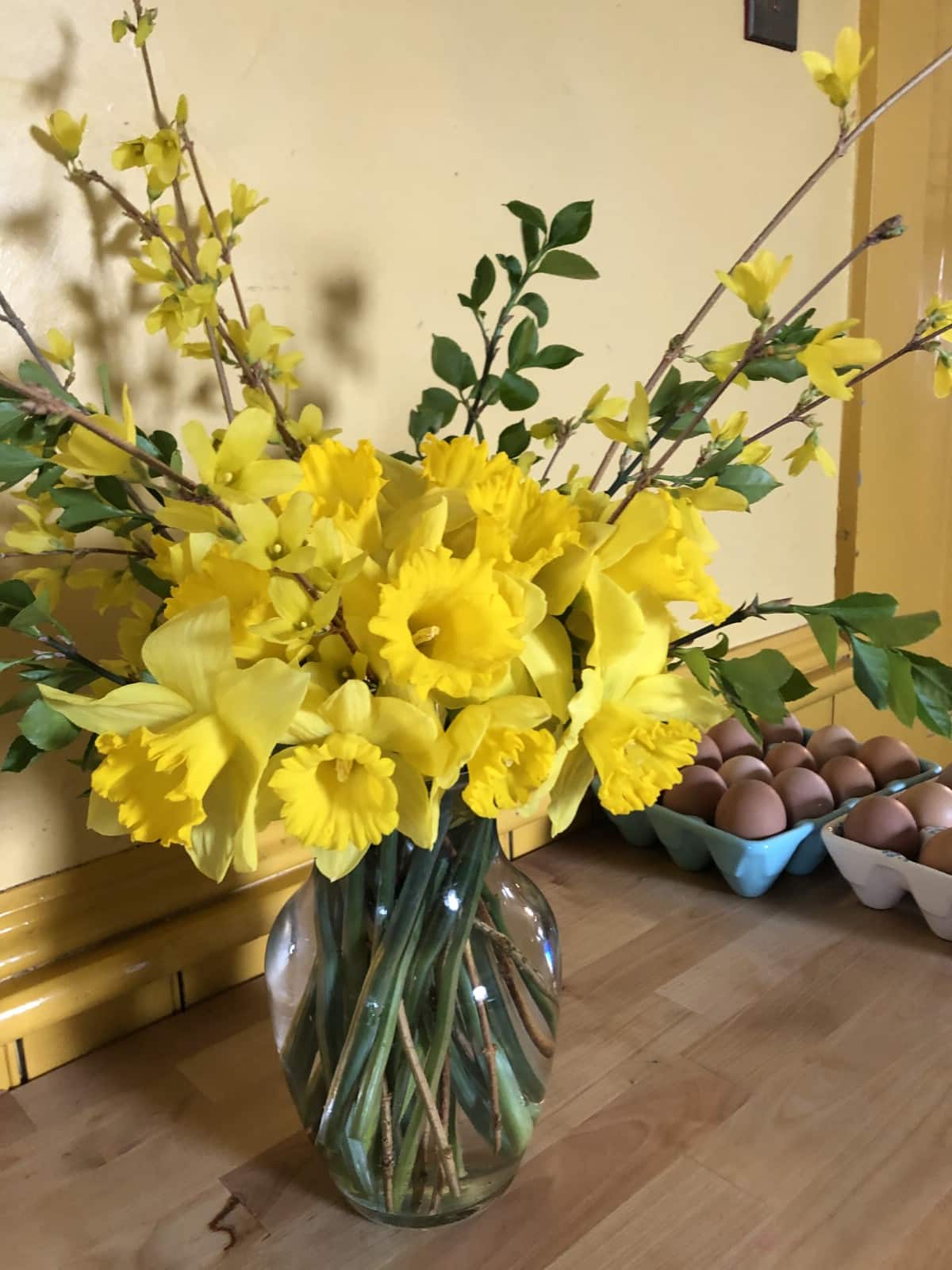
Growing flowers for cutting can be quite addicting. Once you get used to having your own ready source of flowers for DIY flower arrangements, you’ll never want to go without again. The convenience of having these flowers growing right alongside your fruits and vegetables will make care and maintenance easy; a ready-made beneficial source of function and beauty for you to enjoy.

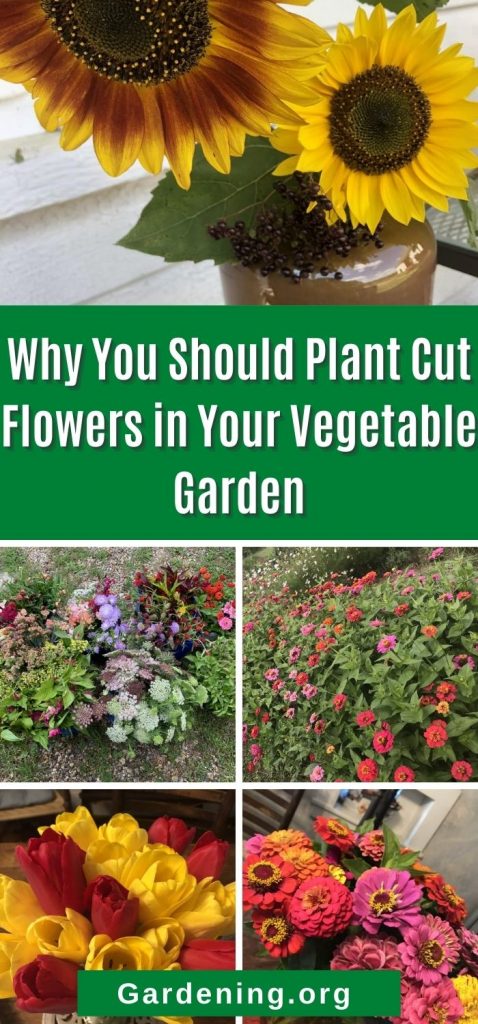
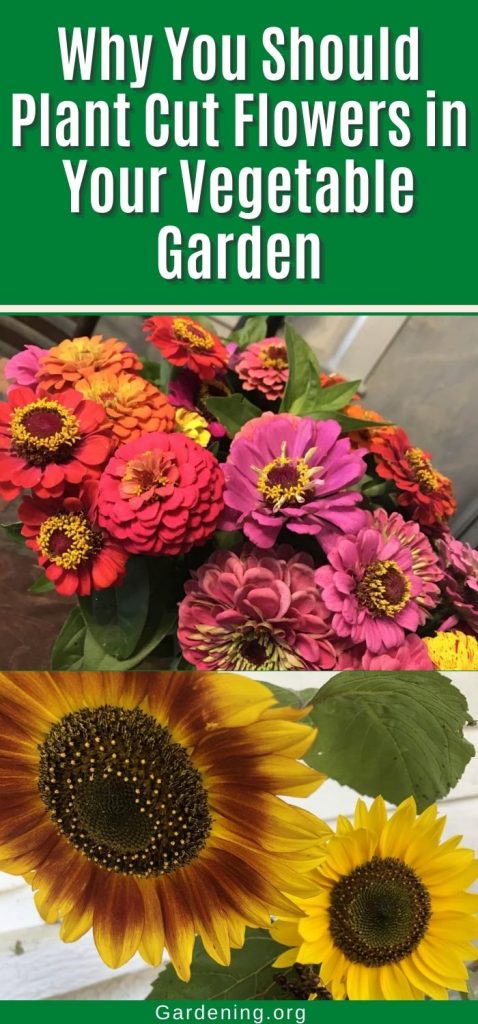
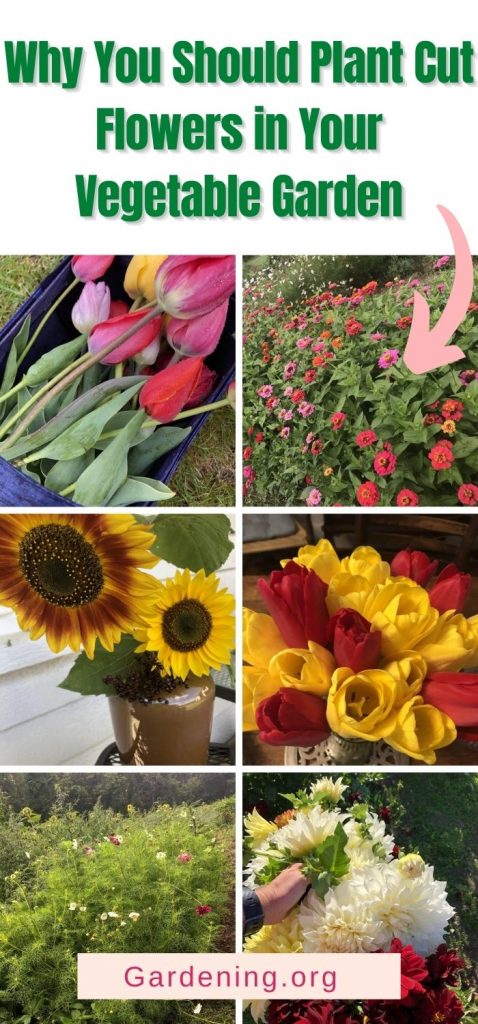
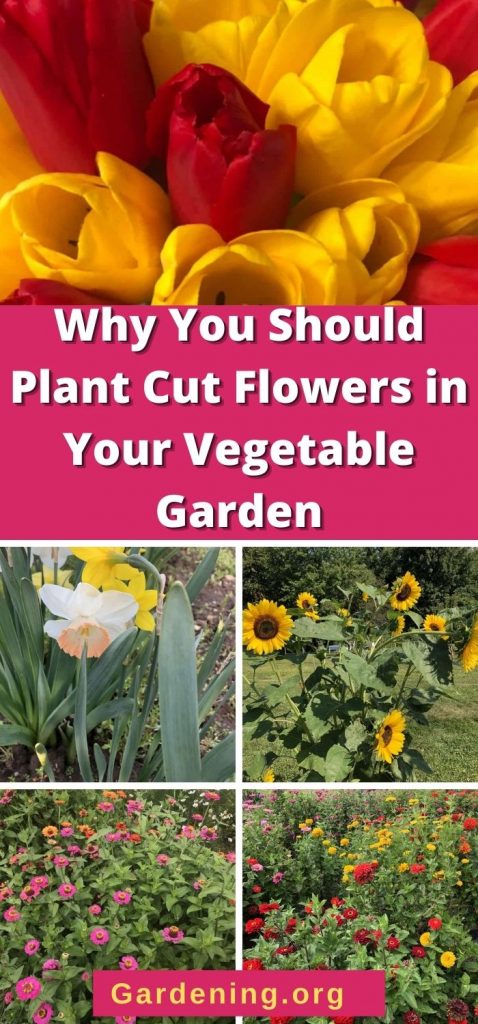
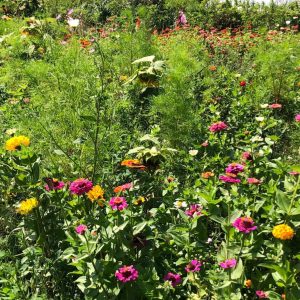
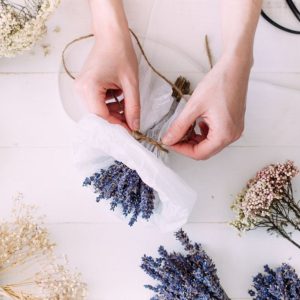

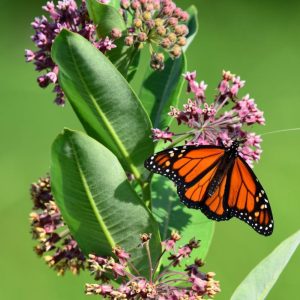
Mariah Villocillo
Nice and beautiful. Really a stress reliever. Love it!